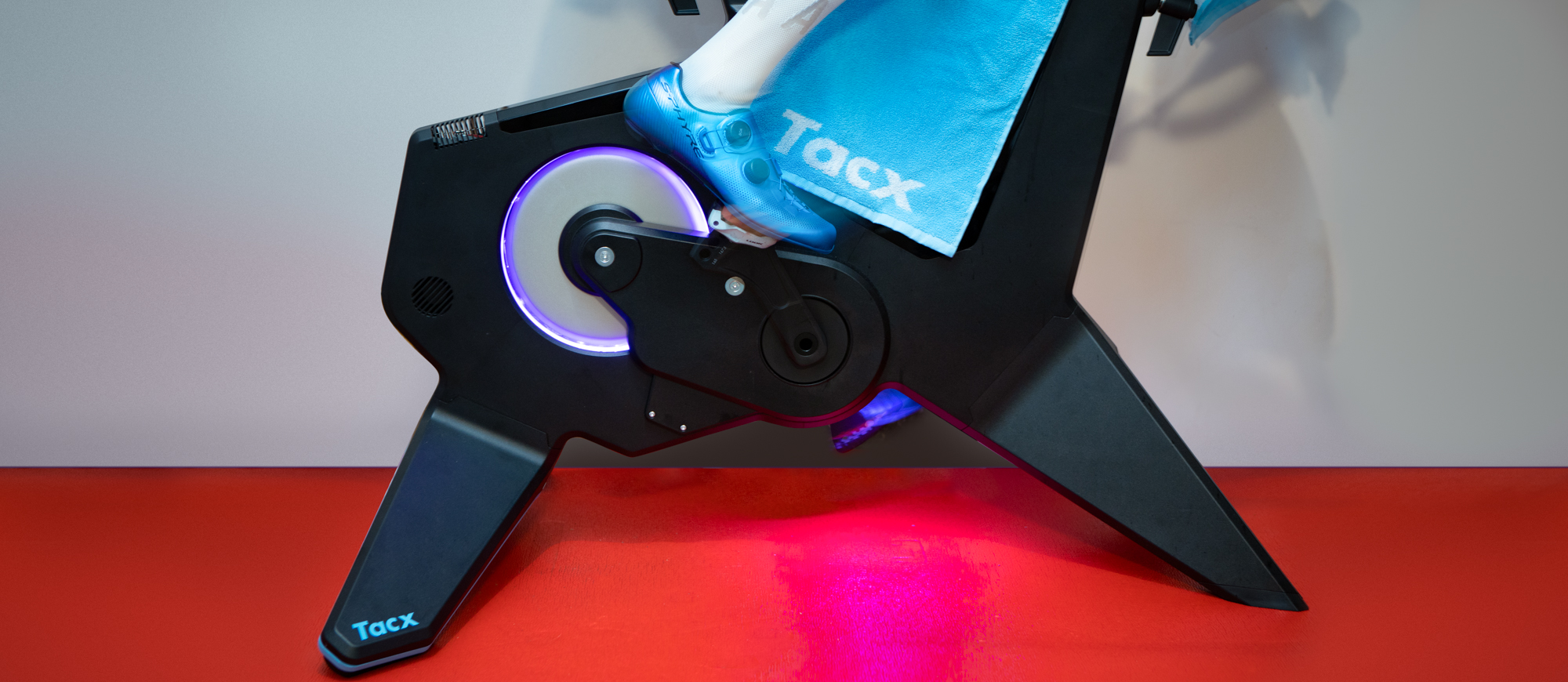Cyclingnews Verdict
Any of the indoor bikes on the market represent a big upgrade for indoor riding. If indoor racing and structured interval training represent the majority of your indoor riding then the Garmin Tacx Neo Bike Plus makes the most sense.
Pros
- +
Powered flywheel adds realism
- +
Incredibly quiet and smooth pedaling
- +
Complete freedom in gearing choices
- +
Low step-through frame
- +
Frame is solid with no creaking
Cons
- -
Phone tray isn’t removable
- -
Not compatible with oval saddle rails
You can trust Cyclingnews
There was a time when indoor cycling specific products represented a niche within a niche. No one bothered selling products because only the most dedicated bothered riding indoors. Today that has all changed. Indoor cycling is an important part of the greater cycling ecosystem. There are clothes for indoor cycling, tons of accessories, desks, you name it and there's an option. Part of the transition is how far smart trainers have come since they first hit the market. They've gotten cheaper, and better, but they still represent a compromise.
Smart trainers still revolve around the use of an outdoor bike and that means there's space to further optimise. The ultimate indoor riding experience comes from one of the best exercise bikes. Within that list though, many of the options are spin bikes rather than a progression from the best smart trainers. There's only a small group of products available that are specifically designed to give the feeling of outdoor riding while optimising for indoor cycling. One of those is the Garmin Tacx NEO Bike Plus smart bike trainer and it is an option that has had a recent update earning it the Plus tag in the name. Like its closest competitor, the Wahoo Kickr bike, the changes aren’t drastic and they’ve come with a price hike.
With that in mind, we took a look at it and spent time testing what it was like to ride. If you’ve ever considered upgrading your indoor riding to the best of what's available, keep reading to see if this is the right product for you.
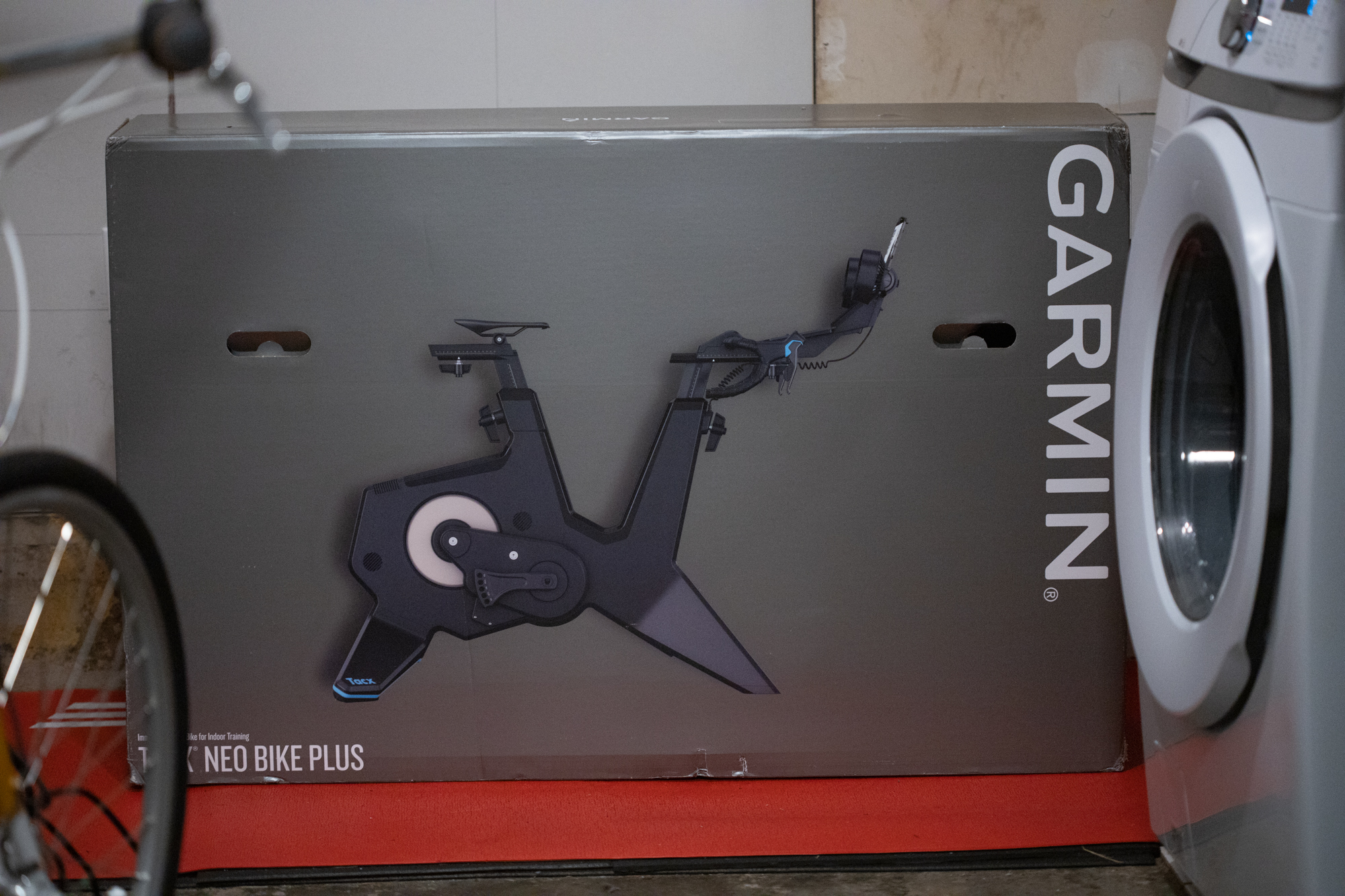
Design and aesthetics
The Garmin Tacx Neo Bike Plus comes in a box that looks almost exactly the same as every other Garmin product. It's simple seamless grey with a big Garmin logo and a perfectly lit studio product image. It doesn't feel like a bike, it feels like a trainer. It's interesting because there is no dramatic sense of greatness to it.
The delivery is about the same experience. It came via UPS and, other than a polite request from my UPS driver for a bit of help, it came to the house like every other product I spend time discussing. There was no wooden support bracing and no special freight company involved. It's presented as a tool just like the least expensive Garmin fitness tracker and that's part of what Garmin has done with the Tacx Neo Bike Plus. They've taken away the drama and provided a tool.
When it's time to open the box and set things up, the first step is to cut away the outer box. Inside is a second box and inside that is a collection of pieces all neatly packed inside a well-designed puzzle of styrofoam. I don't have a fancy workout room with plenty of room, I have a tiny space packed with bikes hanging from the walls and a washer and dryer. Even in my tiny space it took about 30 minutes, including some pictures, to set the bike up with no help. The box is heavy but the individual pieces aren't.
Once you've emptied out the box and put the pieces together, you get a sense of the design language and concept that makes up the Tacx Neo Bike Plus. It's almost exactly the same as the Tacx Neo Bike that came before it and both are essentially just a Tacx Neo 2T packaged into a full bike.
The similarities with the Tacx Neo 2T go well beyond the visual language. There's the familiar grey and blue, and the Tron-like lighting makes another appearance, but the way the flywheel works is also exactly the same as the Neo 2T. There is no flywheel, instead, the Tacx Neo Bike Plus relies on a system of magnets. It's capable of producing up to 2200 watts and replicating a 25% gradient. The integrated power meter requires no calibration and is accurate to greater than 1%. It also measures left and right separately and will report pedal balance if you record a ride with a Garmin device. You can even get Pedal Stroke Analysis although it does require recording a ride with the Tacx Windows-only desktop app.
These specs are all the same as the Neo 2T because, again, the system is the same. Also the same is that the magnets work to create a virtual flywheel of 125kg. Consider that more conceptual though. What really makes it work is the powered flywheel that adds spin to continue the momentum as it would in the real world. That same system will also, if you turn it on, use quick pulsing on and off to simulate the feeling of cobbles or gravel.
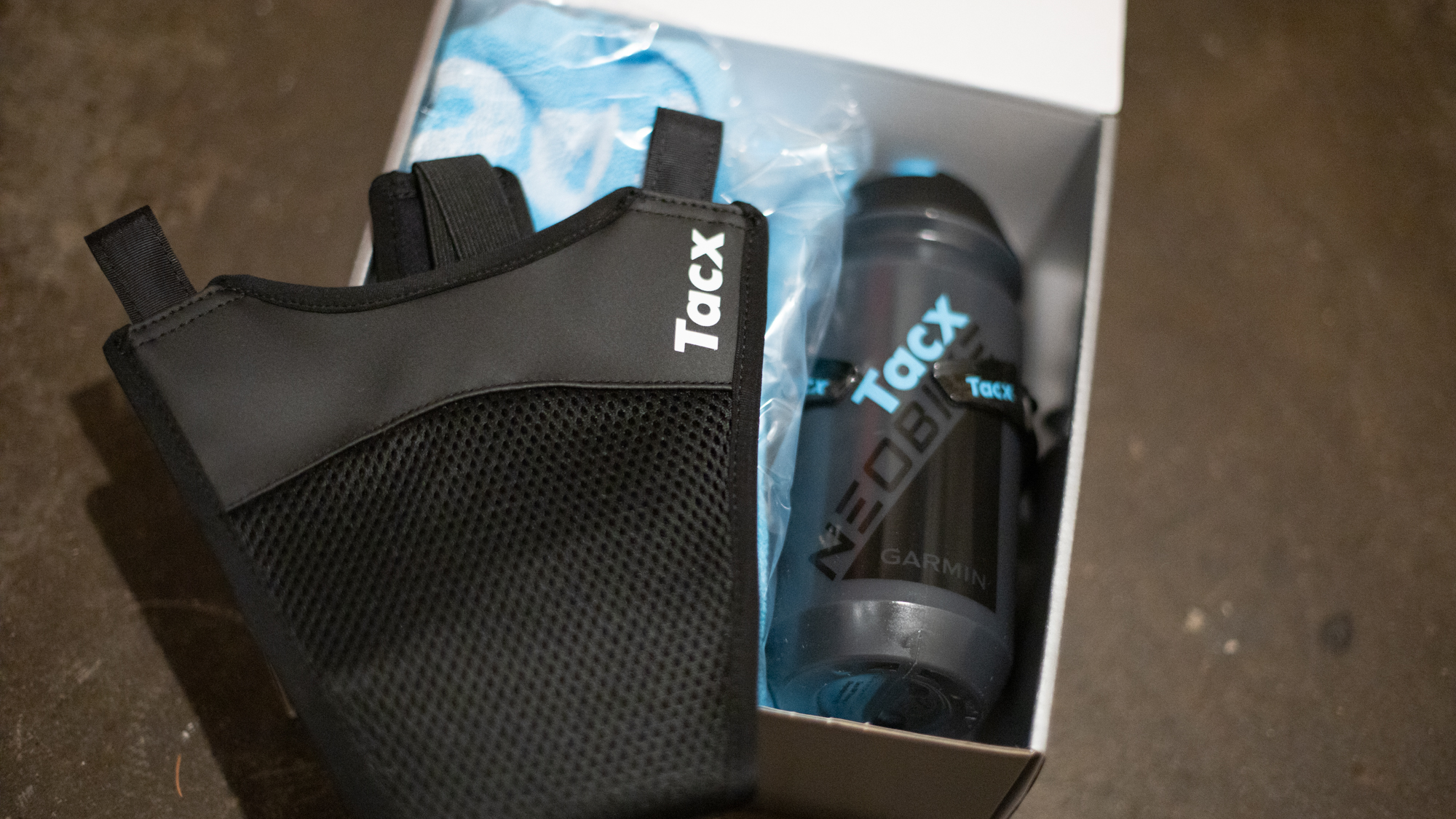
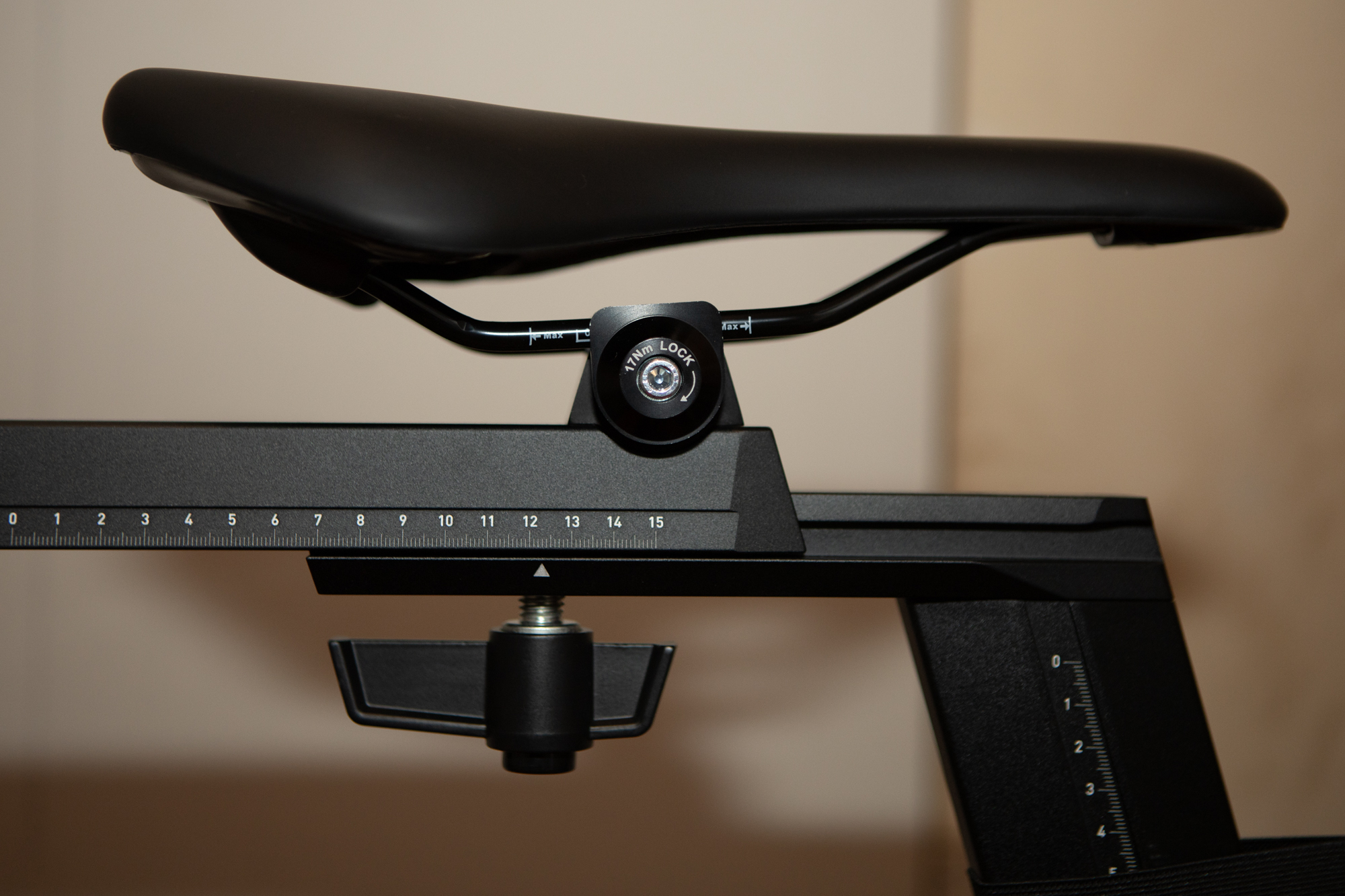
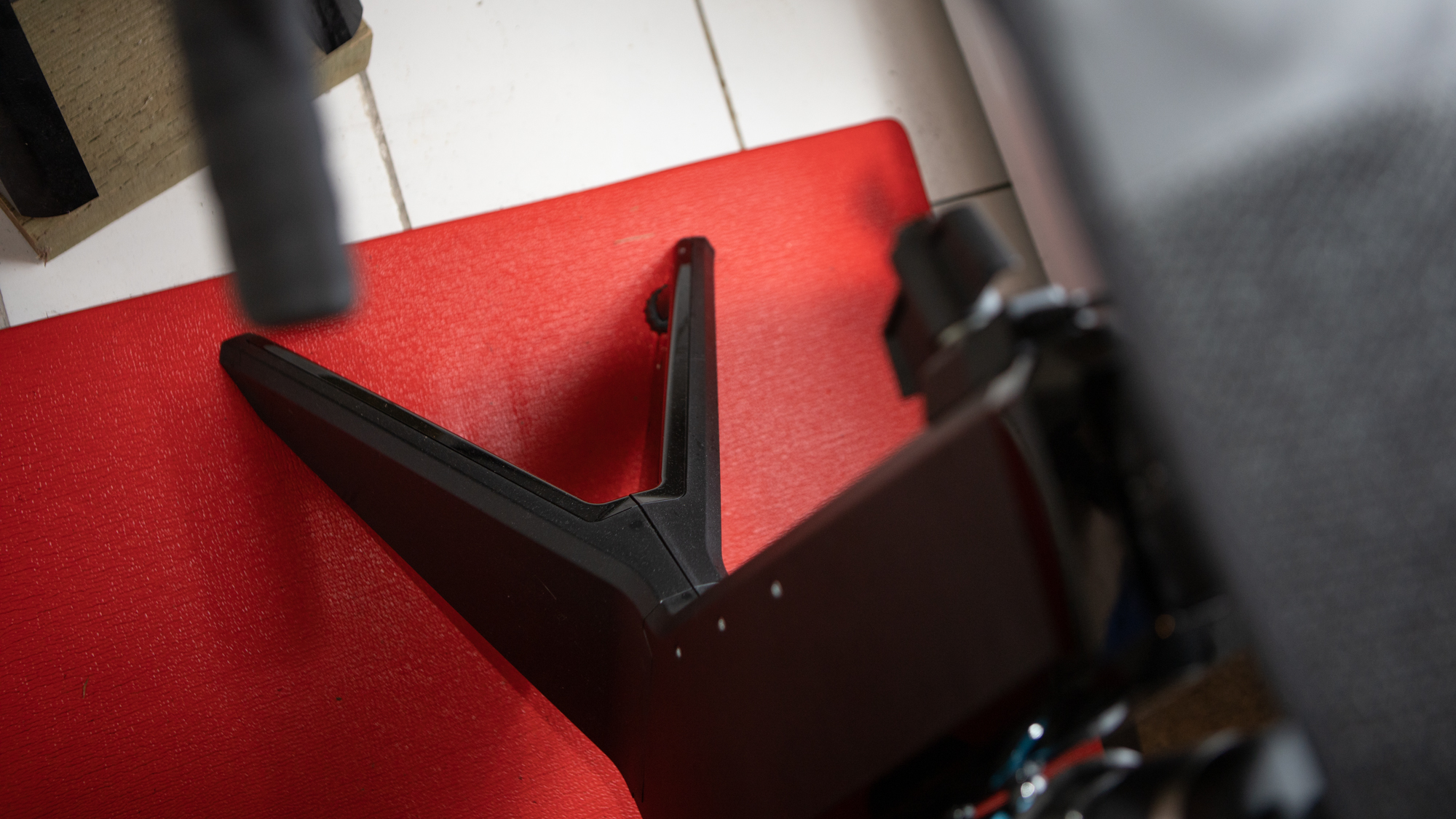
Once again though, that's all the same as the Neo 2t. What's different with the Neo Bike Plus is that it's had a bike wrapped around it. Well, not exactly a bike, more like a collection of touchpoints assembled to provide the feel of a bike. It's an important distinction because it's what makes a smart bike better at what it does.
Smart bikes are still new enough, and rare enough, that I feel compelled to define why they exist. You don't need two wheels and a traditional frame for a bike that never moves. Instead, you can optimise for the intended use. In place of the wheels there are feet that stabilise the whole system. The rear feet do have wheels so, when tilted back, it's easier to move the bike but there's nothing to collect sweat and decay over time.
The main frame is a narrow step through design. Everything that slides has marked measurements and big handles to quickly loosen and tighten it. At the rear that means the seatpost and saddle setback require grabbing the large handle loosening it repositioning it and tightening again. If needed, you can reposition the handle without turning the adjuster. No tools required unless you want to angle the saddle, or swap it. Just keep in mind that whatever saddle you decide to use must have round rails. The clamp is from the side and there's no kit for oval rails.
At the front, the big news with the Plus version of the Garmin Tacx Neo Bike is the change to the controls. Gone is the previous toy-like iteration and in its place are the same standard drop bars but this time with controls that feel almost the same as Shimano Di2 controls. There is a brake lever as well, and it technically works, but it's largely irrelevant. As in the rear, the height of the bars is a quick adjustment with no tools and so is the length of what would be the stem. You can also rotate the bars if needed but that requires removing four hex bolts.
In front of the bars, Garmin adds a few quality-of-life details. First, there's a tray for your phone with a removable rubber liner and a cutout for a charging cable. The underside houses two USB-A ports with one providing 2.5 watts and the other putting out 12.5 watts. Up ahead of that is a high-contrast display that shows the connection protocol, power, heart rate, and the gear you are in. There is no cassette and you can set your gearing up however you want. While riding the only way to know what gear you are currently in is by looking at the display.
The tray and the display aren't removable but everything ahead of them is. That means the pair of fans and tablet holder are optional. If you decide to use them, the fans move and tilt so that you can get the angle just right and speed can either adjust with heart rate or it's adjustable through the companion app. If you don't use a tablet and need to see your computer, the whole section is removable.
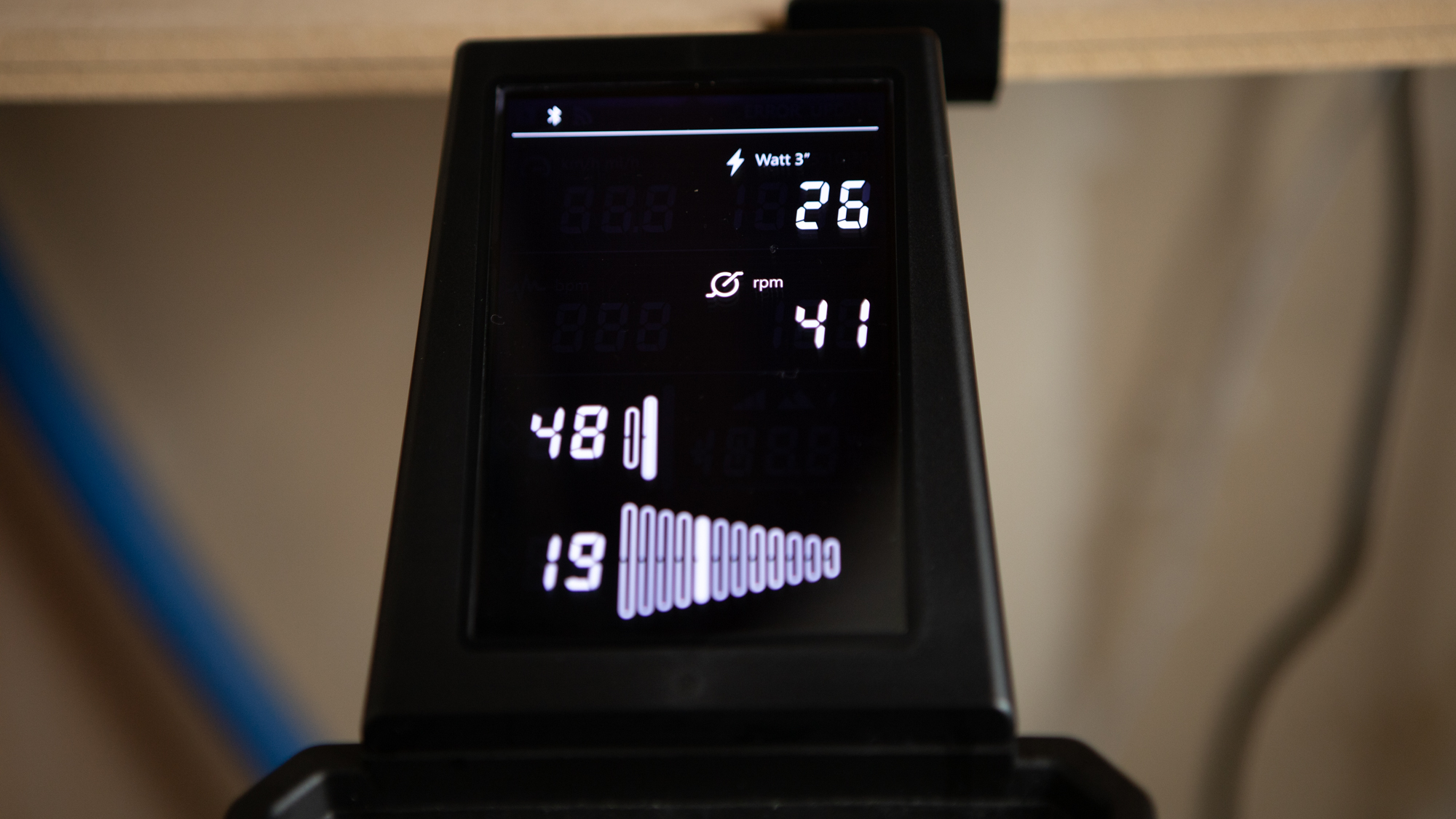

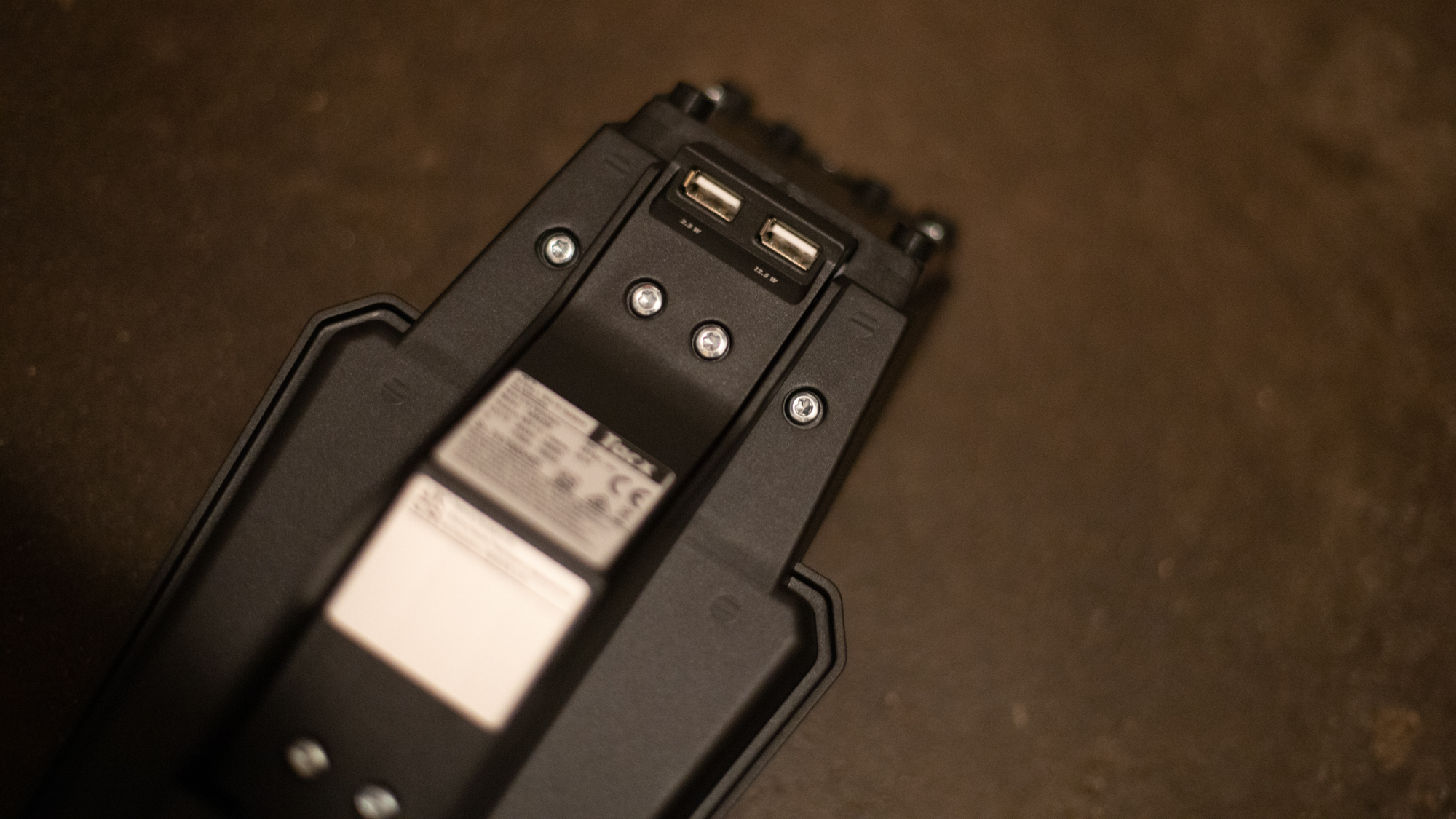
What’s New
For many people, the biggest difference between the Garmin Tacx Neo Bike and the Garmin Tacx Neo Bike Plus is going to be the handlebars and the controls that I mentioned above. It was a sore point that came up often in discussions about the previous version and it’s fixed. It’s also not the only change.
None of the changes are groundbreaking but that’s the nature of a Plus version of a Garmin product. The core experience is unchanged but one of the USB ports now carries more charging power with a 12-watt spec. You can now customize the shifting to match SRAM, Shimano, or Campagnolo shifting style. The seatpost is a little thinner so that fewer people experience thigh rub. The crank length has five options, up from three, there’s no longer any need for adapters or extra pieces to change crank lengths. The last design change in the list is the addition of handles to the adjustment points. Changing something no longer requires any tools and if you share the smart bike this makes it easy to make fit adjustments depending on who’s riding.
Then there’s the price. The price has moved up more than a little and it’s unclear exactly why. Unfortunately, at this point if you are looking for a full smart bike, the investment is significant. Both Wahoo and Garmin have raised their prices and now they match each other's retail prices. It’s worth noting that for now, both Wahoo and Garmin are selling the previous version for the previous price. Unless you have to have the latest details, that should be a strong consideration given that the core experience is so similar.
Performance
I tend to start the conversation about a big piece like this with a discussion of the setup. I did mention it briefly earlier, and there isn't much more to say. It's a much less involved process compared to other smart bikes I've used. The major piece is the body and frame of the bike and once liberated from the rest of the packaging I was able to lift it and move it around with relative ease. It found a home leaning against the wall and I was able to lift each side with one hand and attach the feet with the other. Once that's done it's just a matter of attaching all the touch points and since you already have a stable bike, it's incredibly easy. I suggest measuring off a wall and using the bottom bracket as your point of reference.
With the physical bike all set, it's time to jump into the app. It's the same Tacx Training App that works with other Garmin Tacx trainers and it's got all the same premium features. If you want to subscribe, there are real-world routes to ride, challenges to undertake, and training plans to work through. What may be more important to a lot of people is that you can set a specific power, or slope, to ride at with no subscription needed. I find this useful for recovery days when riding in Zwift and it's important to me that it's there.

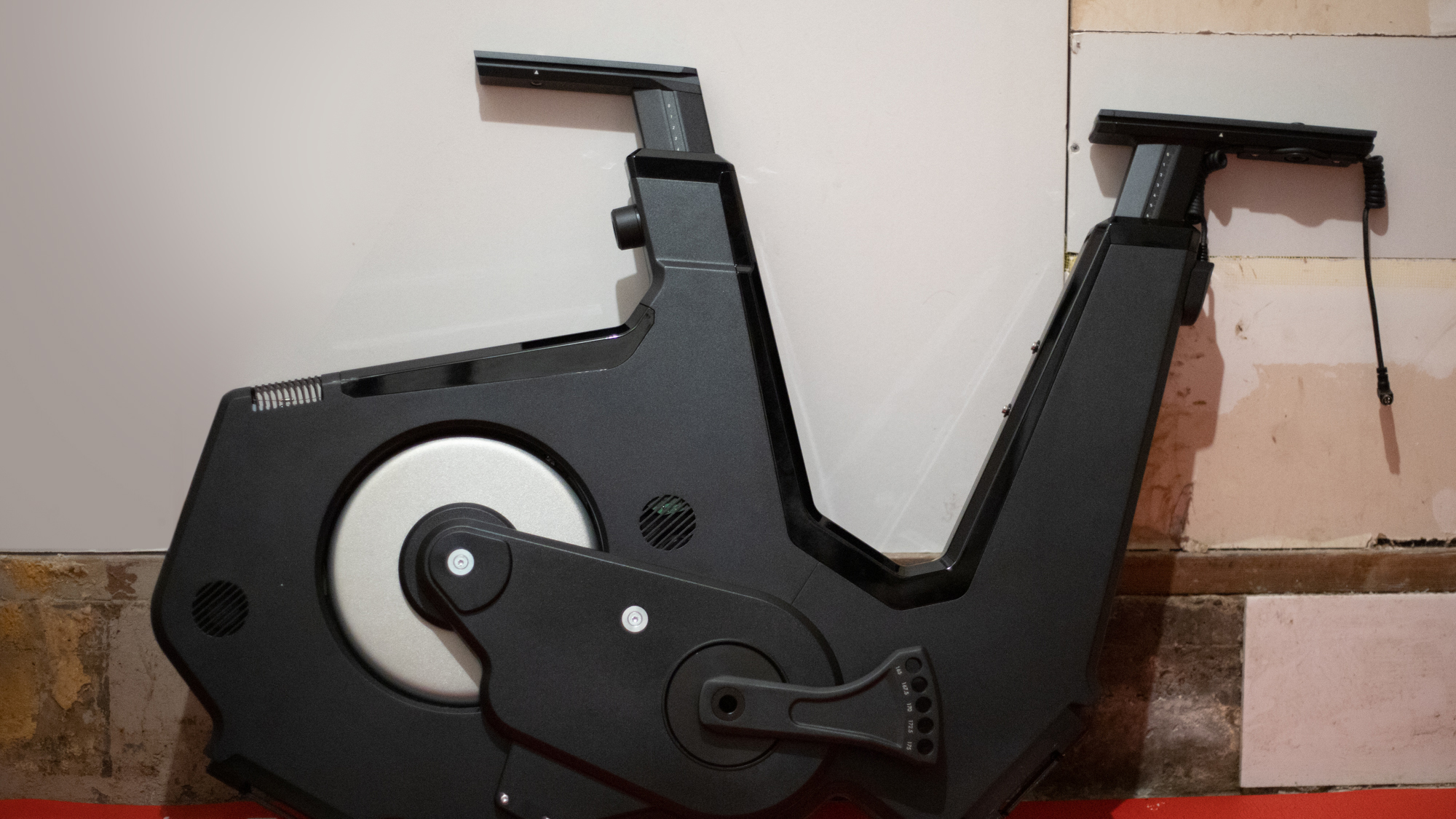
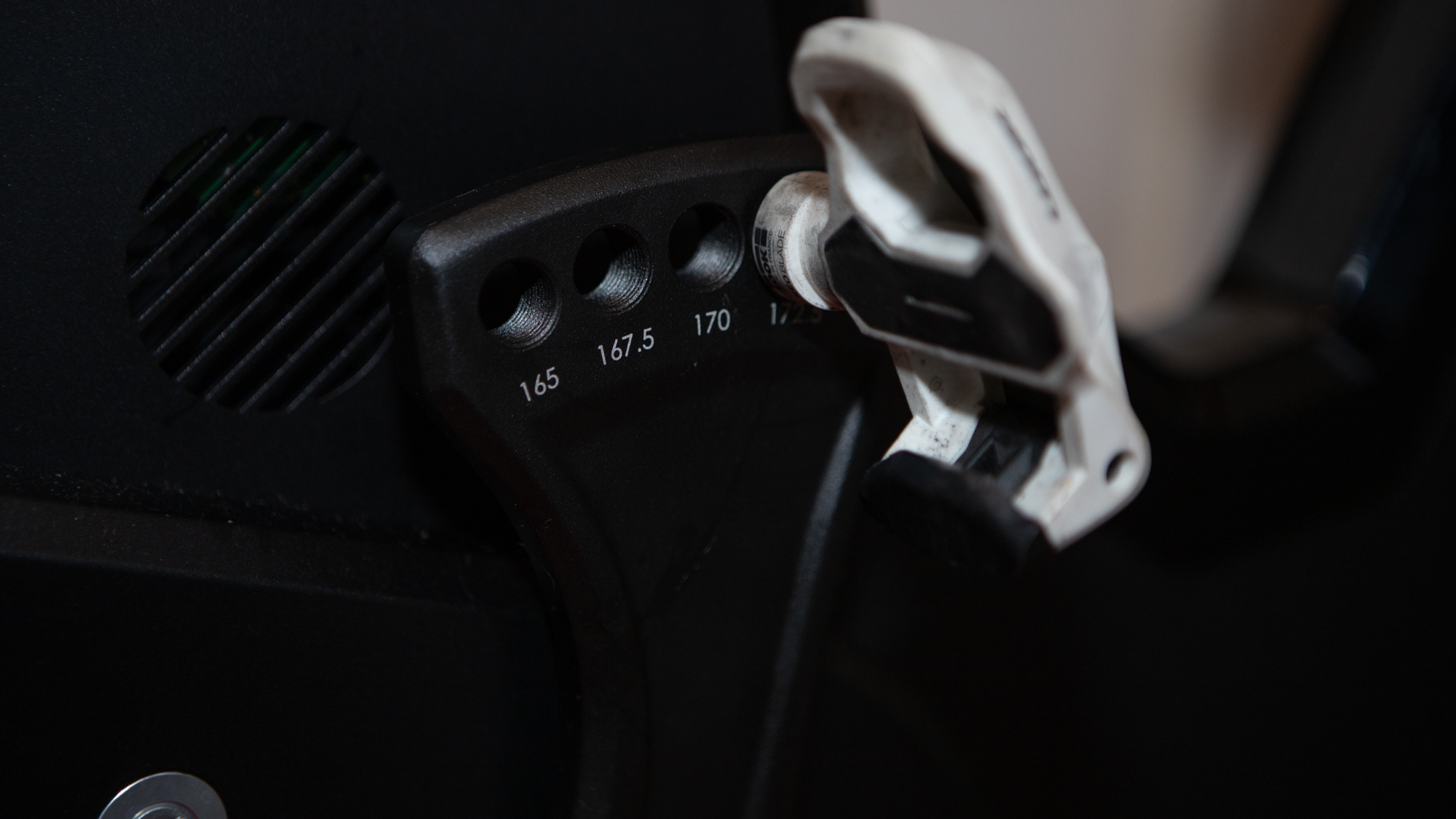
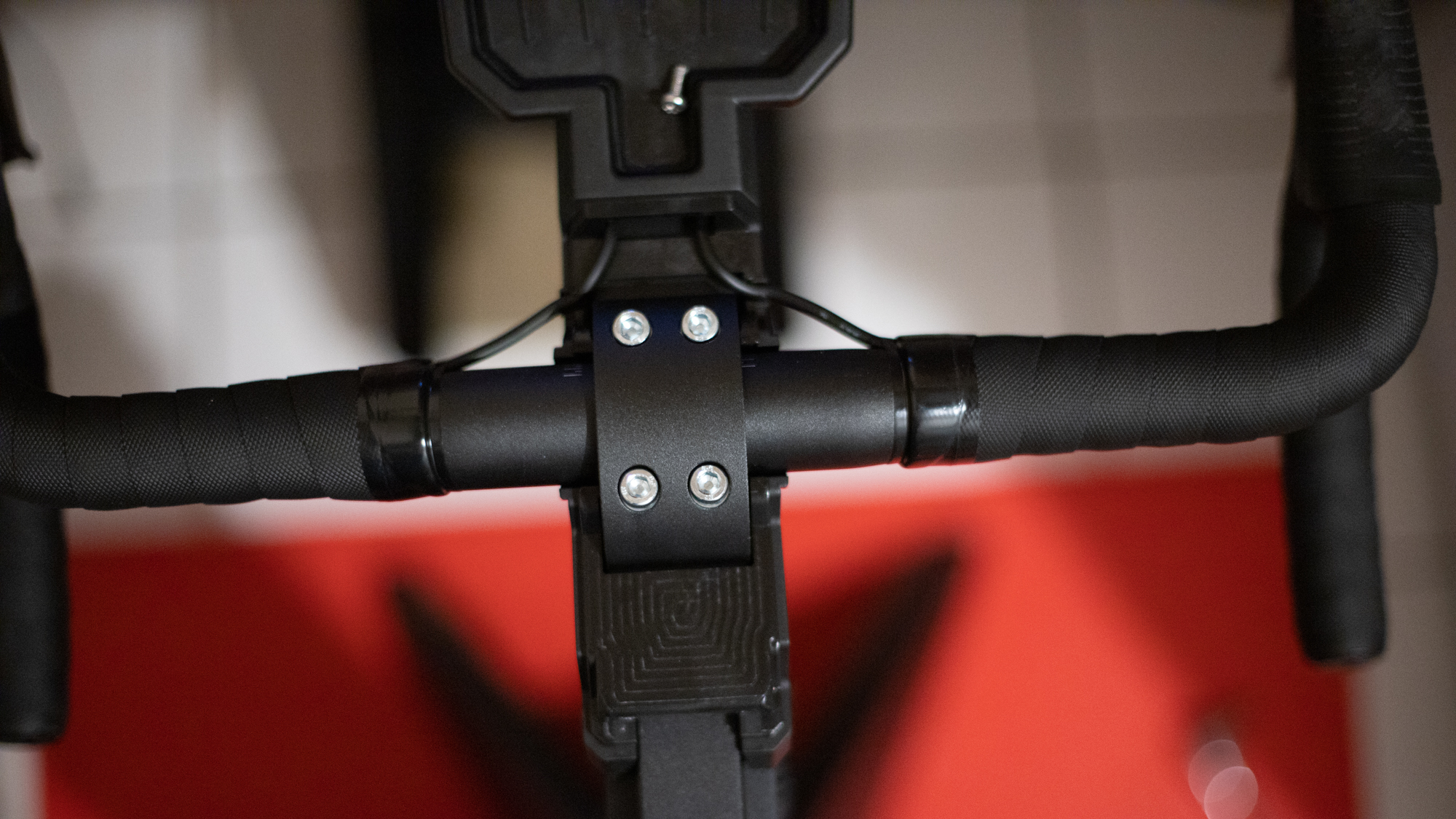
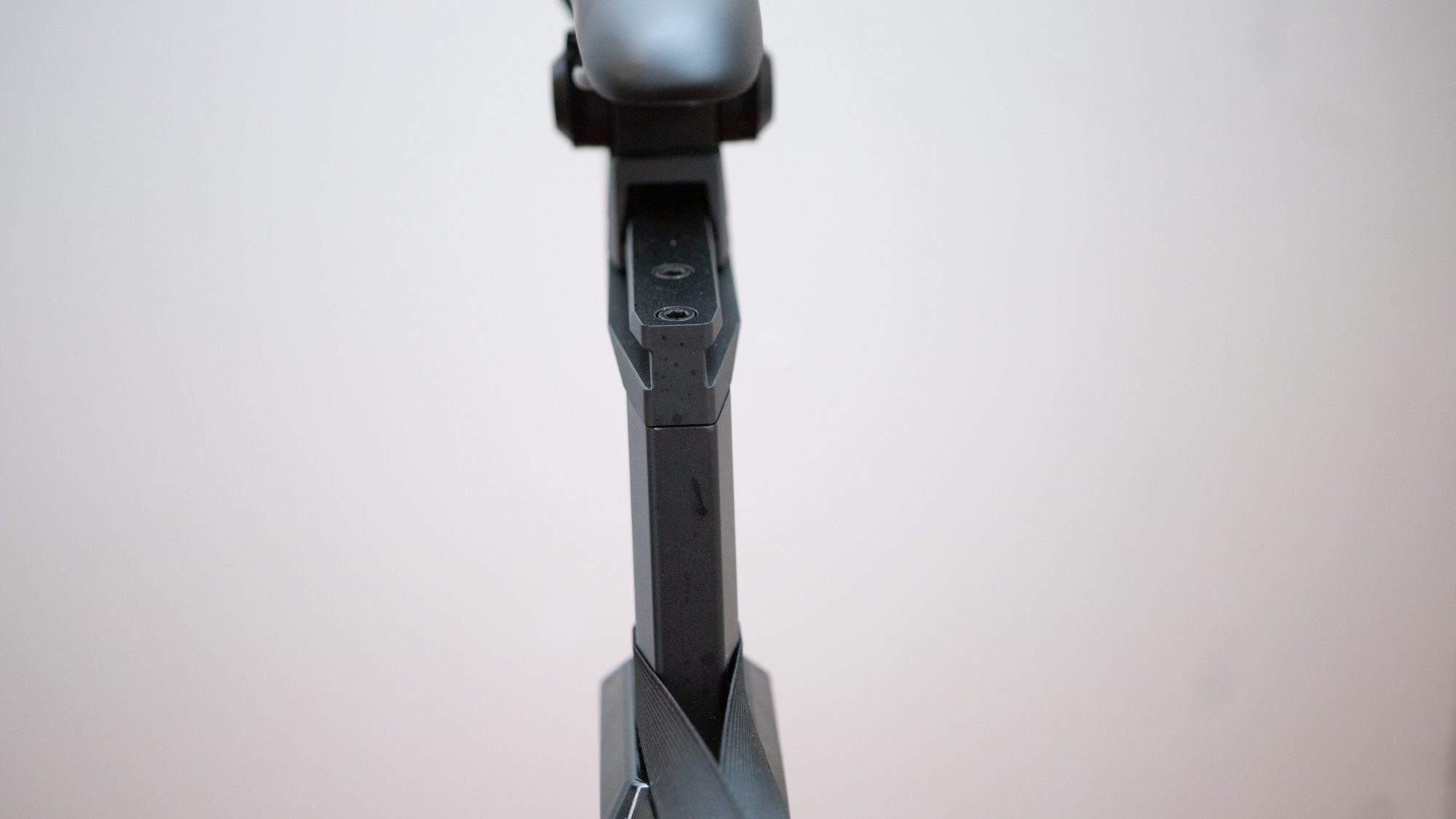
The app is also where you'll complete the electronic part of the setup. The shift buttons consist of what's almost a duplicate of Di2 but there's also a third button on the inside that mimics a Campagnolo setup. As mentioned above, you now have the choice to change the shifting so that it works like any of the three major manufacturers. I found though that only Di2 really makes sense. Initially I chose SRAM AXS but the physical buttons don't feel like SRAM and it just wasn't quite right. Same for Campagnolo. There might be a button on the inside but it's nowhere near as elegant as an actual Campy setup. Your choice though and gearing is also your choice.
It's one of the best things about a smart bike. Gearing is all virtual, it can be anything you want and you can change it whenever you want. The Garmin app has options for a triple or double front chain ring and the number of cogs on each gear is customizable. Max is 12 gears in the back but you could go less if you turn the small gears to zero. I went with SRAM X-gearing that matches my outdoor bike.
It's one of the best things about a smart bike. Gearing is all virtual, it can be anything you want and you can change it whenever you want. The Garmin app has options for a triple or double front chain ring and the number of cogs on each gear is customizable. Max is 12 gears in the back but you could go less if you turn the small gears to zero. I went with SRAM X-gearing that matches my outdoor bike.
Outside of gearing choices, there's a ton of customisation here. You can set the options for the fan if you've used them, the display has options for power average interval and metric or imperial units, and you can set the crank length you've chosen. There are also options related to the road feel feature. Just as we saw with the Neo 2T when it initially hit the market, Zwift has yet to turn on road feel support for the new trainer. It is coming but for now you can set the intensity as well as your weight in the app and if you want to test it out there is a road feel test available. I did take advantage of the demo but I've also spent a lot of time using it with the Neo 2T. It's rather amazing at simulating what a wide variety of roads actually feel like.
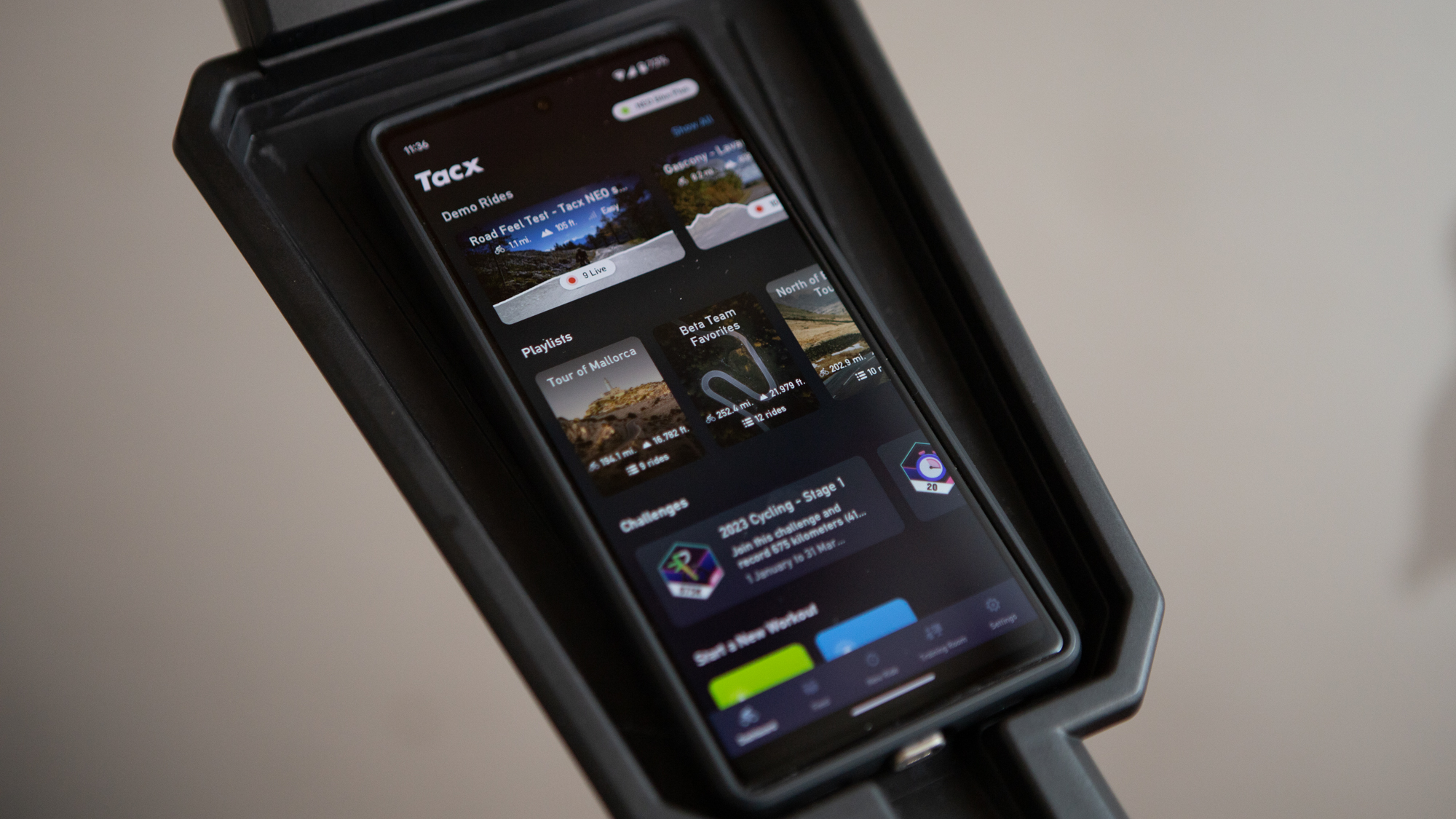
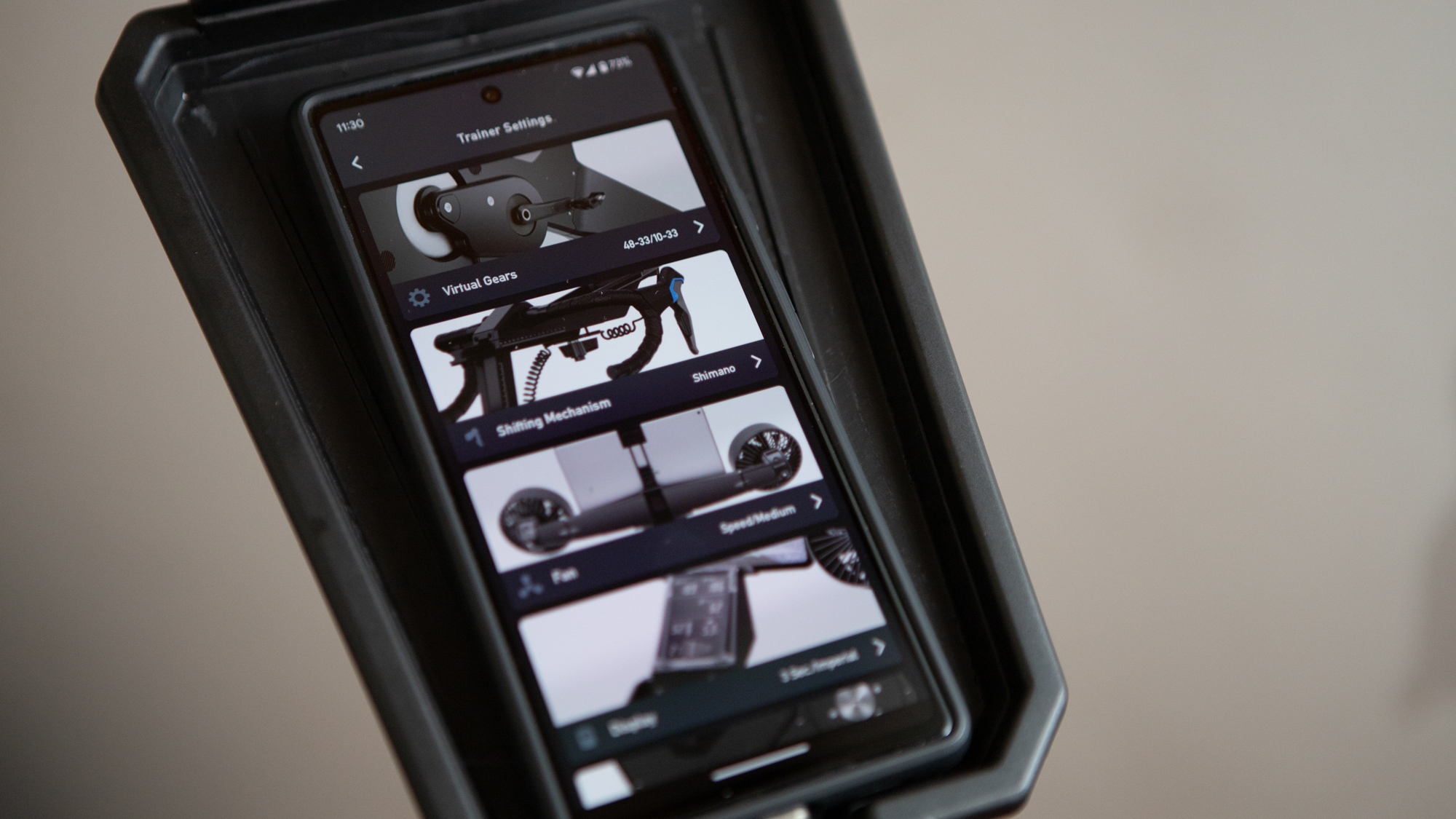
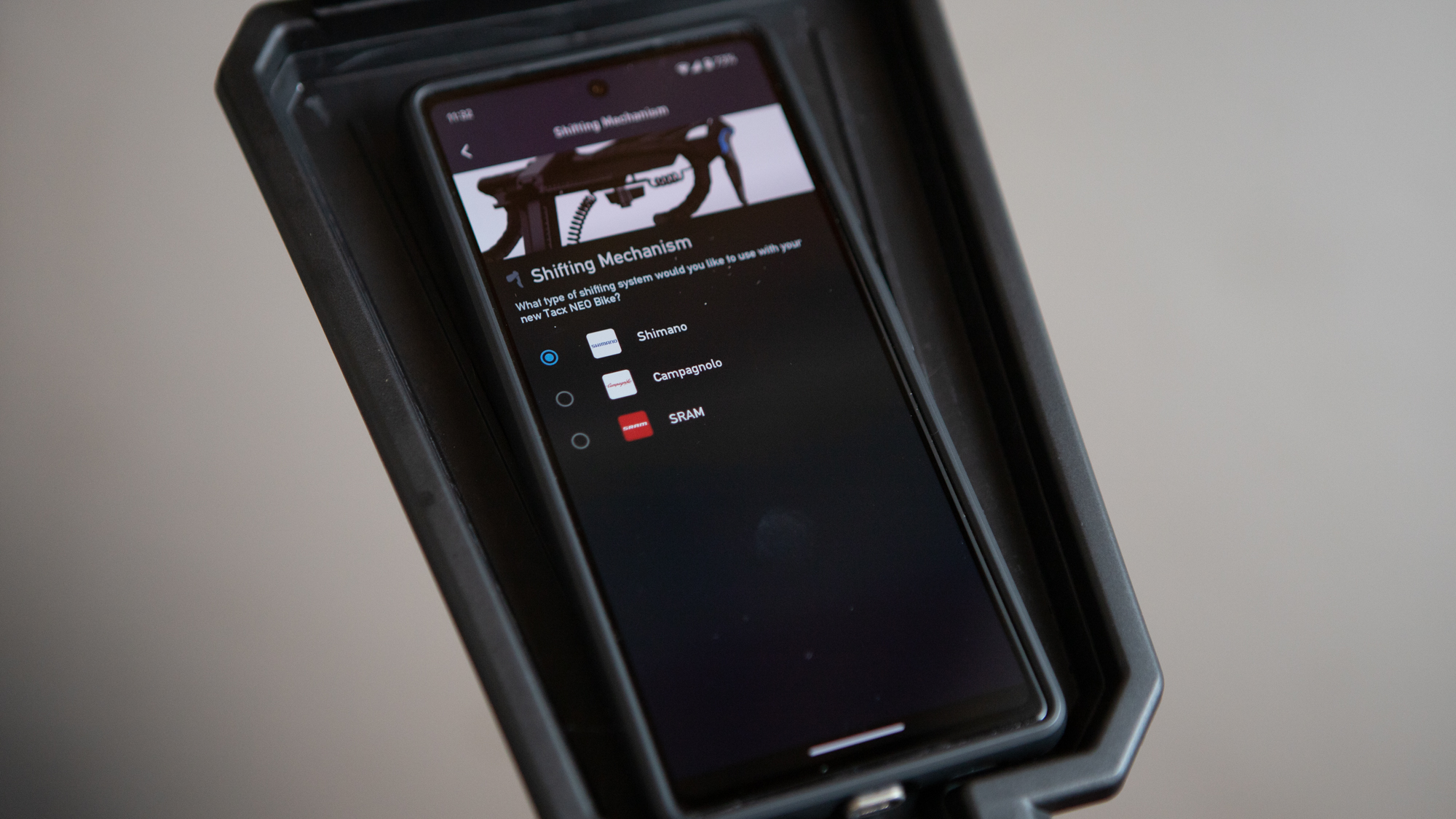
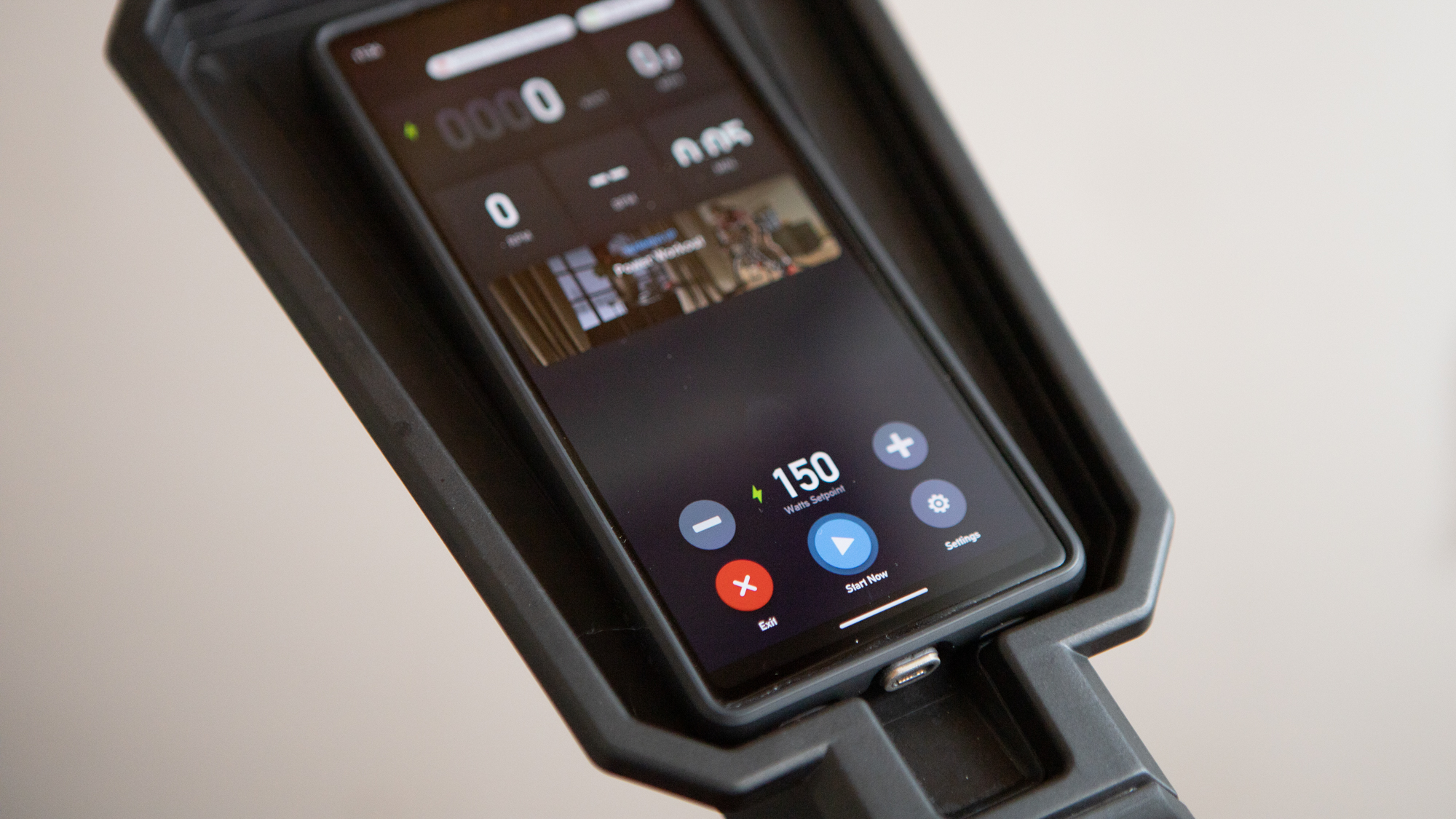
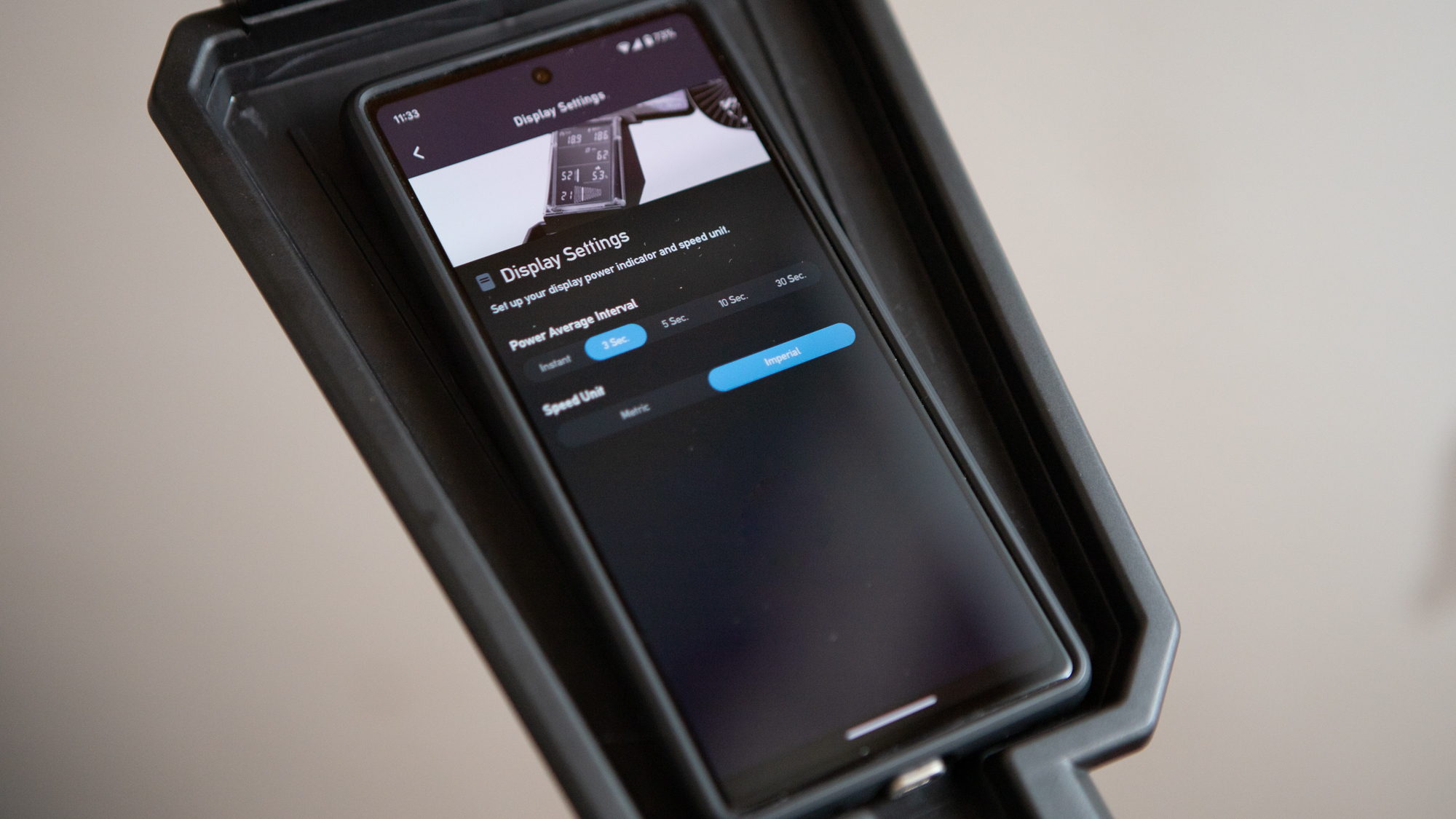
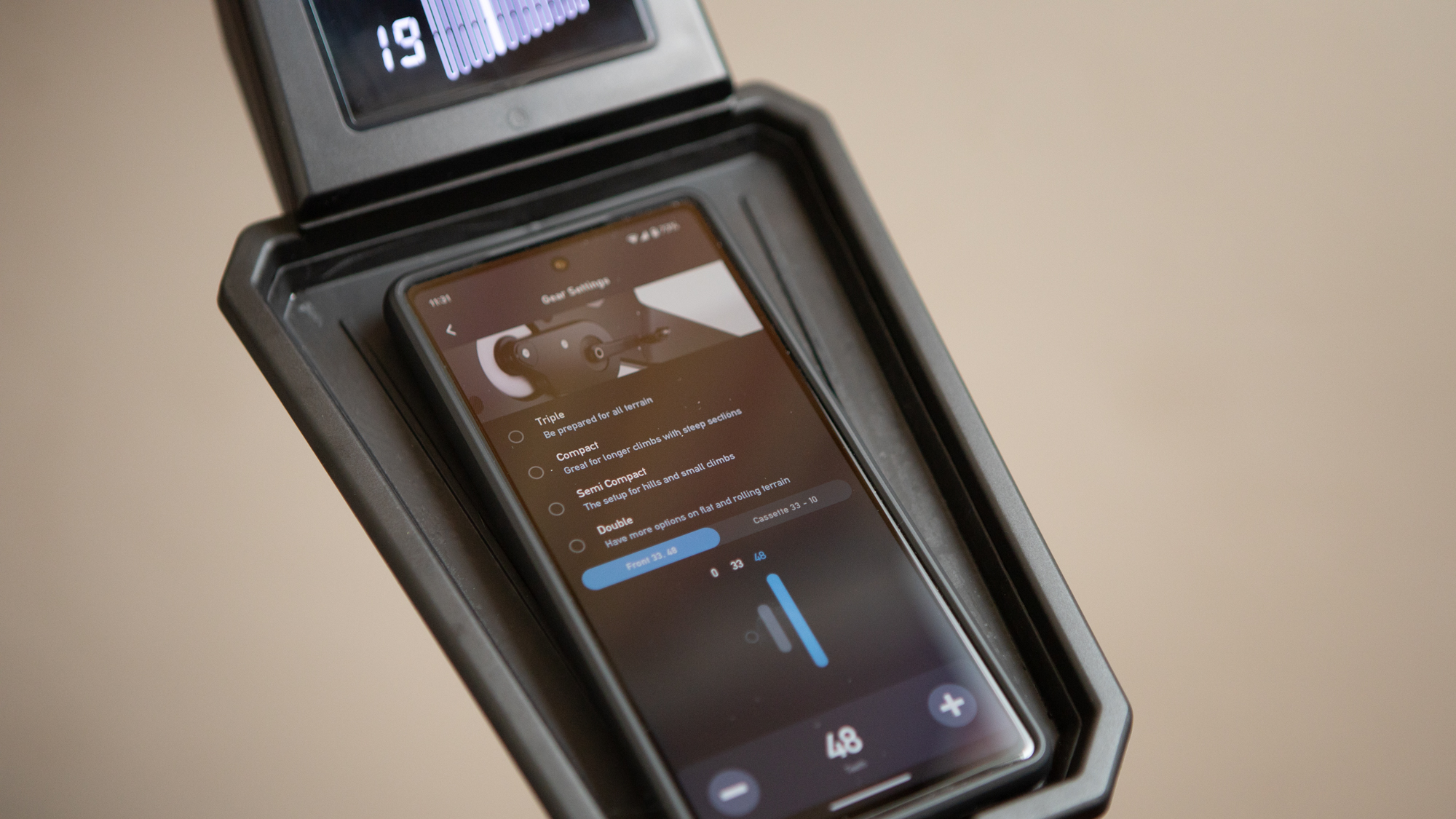
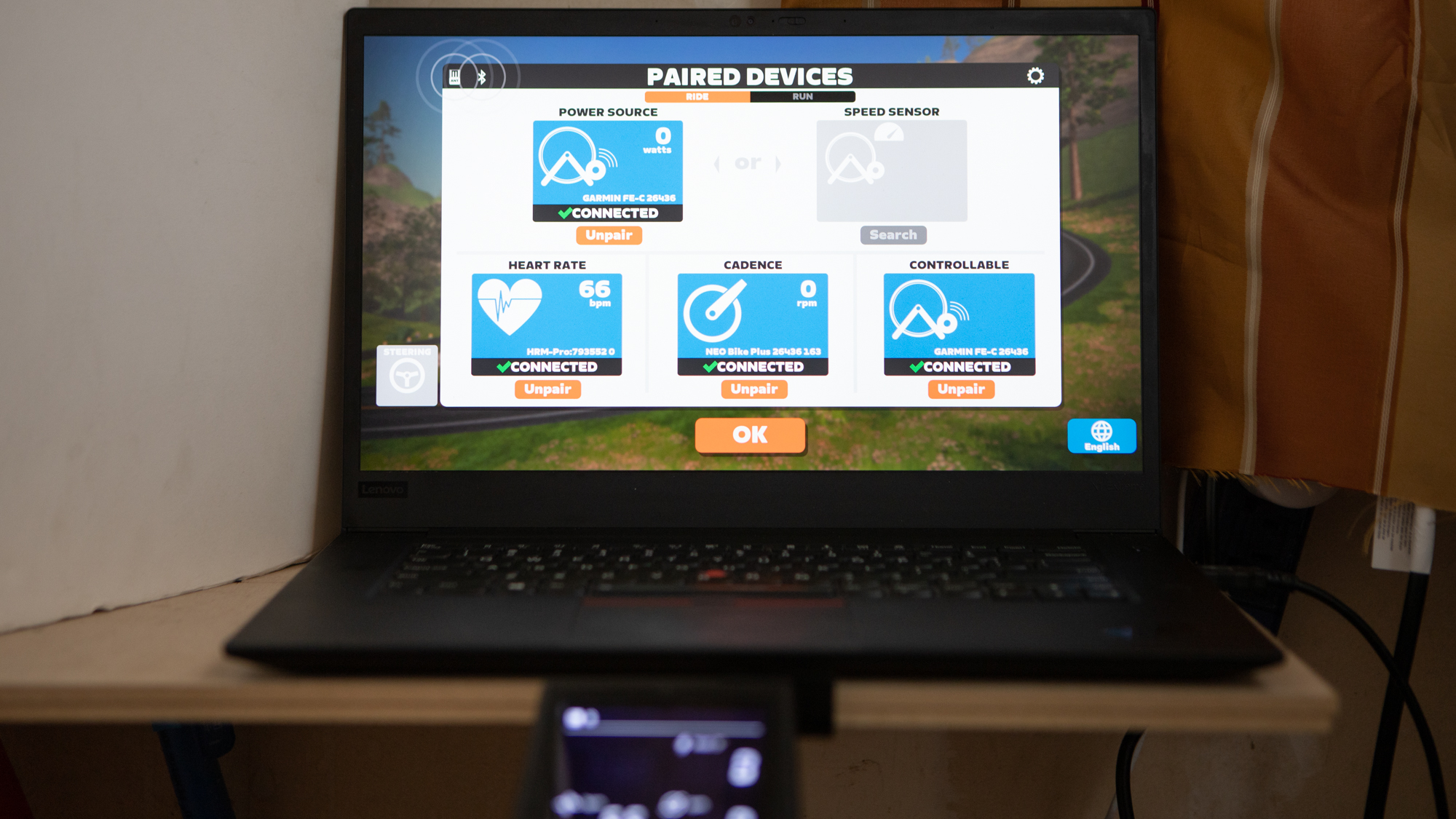
Setup out of the way, it was time to dive into actually using the Garmin Tacx Neo Bike Plus. As always, I started with Zwift racing. What this really puts on display is how amazing it is to ride with a unit dedicated to indoor riding. It's rock solid with nothing creaking and moving. There is no chain and that means there is no drivetrain noise. It's pretty amazing to ride with a lack of that noise but, oddly, there is the noise of a coasting freehub. No chain also means it doesn't matter where you are in the cassette or how much power you are putting out when you shift. If you find yourself racing an unfamiliar course and in the wrong gear on a climb, don't worry about shifting. When it's time to descend, you'll notice the powered freehub.
Garmin talks about this in reference to road feel but it really shines when racing because it allows you to rest more on descents. Consider a shallow 3-percent grade at the end of a steeper descent. Outside if you are north of 48 km/hr you'd continue to gain speed on the shallow descent. Without the powered flywheel you'd start to lose speed in Zwift and you'd lose recovery time. It's subtle detail that adds realism and generally feels better in race situations.
The next thing I jumped over to check was how the unit handles power measurement and responds to requested power changes in ERG mode. I'm not the first to review this unit and there have been some reports of aggressive smoothing. In anticipation I asked Garmin and the response was "we are working on an update that will improve the responsiveness without changing the overall accuracy." Despite that acknowledgement from Garmin and other credible info available, I personally did not experience an issue.
My go to testing for ERG mode performance is a VO2 Max workout in TrainerRoad. Speaking generally, Tacx trainers are fast to adjust and they hold the rider tightly to the selected power in ERG mode. What I found testing was exactly that performance profile. A thirty second interval jumping from 110 watts to 290 watts would take about five seconds to settle if I was close to doing it right. Right meaning a cadence that has room to slow as the trainer increases requested power and no early anticipation of the interval. If I really got it right, I saw many intervals where the initial peak and following trough were functionally non-existent.
That didn't always happen though. If I misjudged and had my cadence too low, I did run the risk of being unable to turn the pedals as the power requirement jumped. In those instances, I had to stop and start again. Wahoo is looser in this situation and I probably wouldn’t have had to stop the interval on a Wahoo trainer. Other times I would anticipate the interval and attempt to spin up a moment early. In those instances, I saw times of around 10 seconds to settle with a peak of 40 watts over and a valley of 30 watts under. To me, that's impressive performance but it wouldn’t catch if there was a mismatch in the power recording.
To check any mismatch, and to check for differences in peaks, I added a set of Wahoo power pedals into the equation. With the pedals connected to a Garmin headunit and the trainer connected to the computer I was ready to test and compare. First the ERG test. The same quick interval was my test and on the trainer I saw a peak power overshoot of 365 vs 290 requested. The Wahoo pedals meanwhile recorded 359 watts. After that I jumped into Zwift and did a couple of max power sprints. The trainer recorded a max of 727 watts while the pedals recorded a max of 724 watts. I don’t doubt what other reports show but my sample of one did not show the same results.
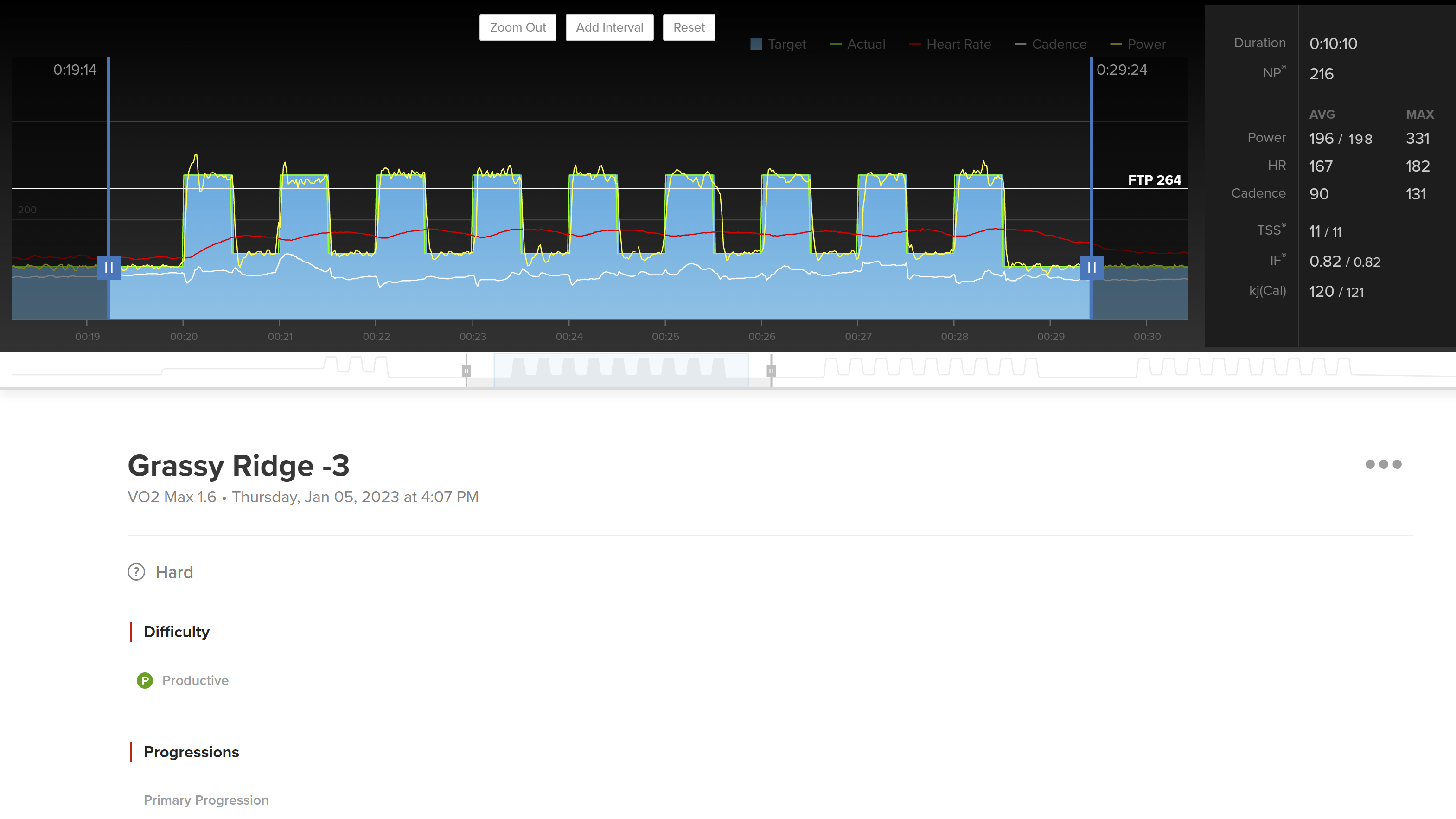
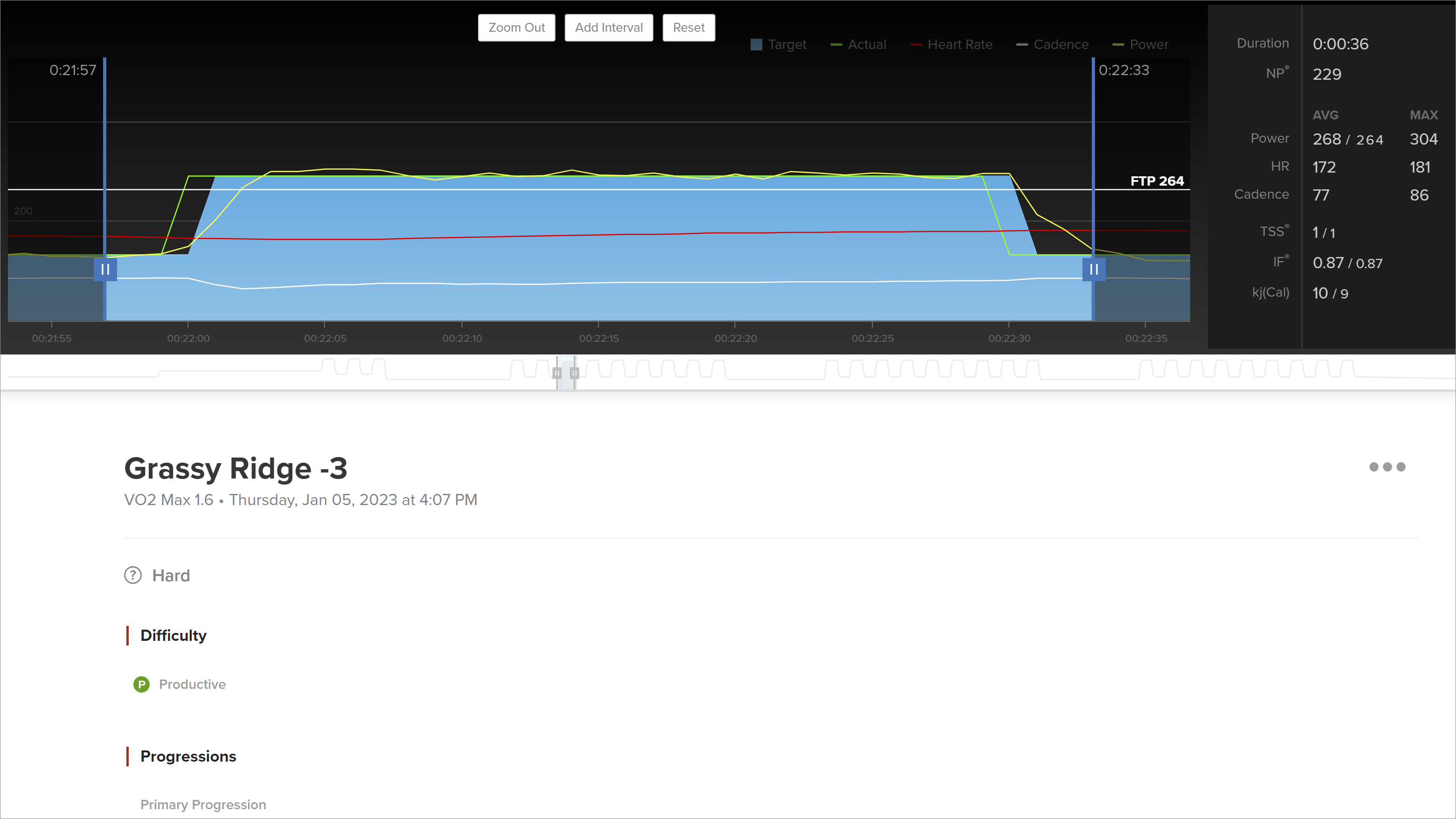
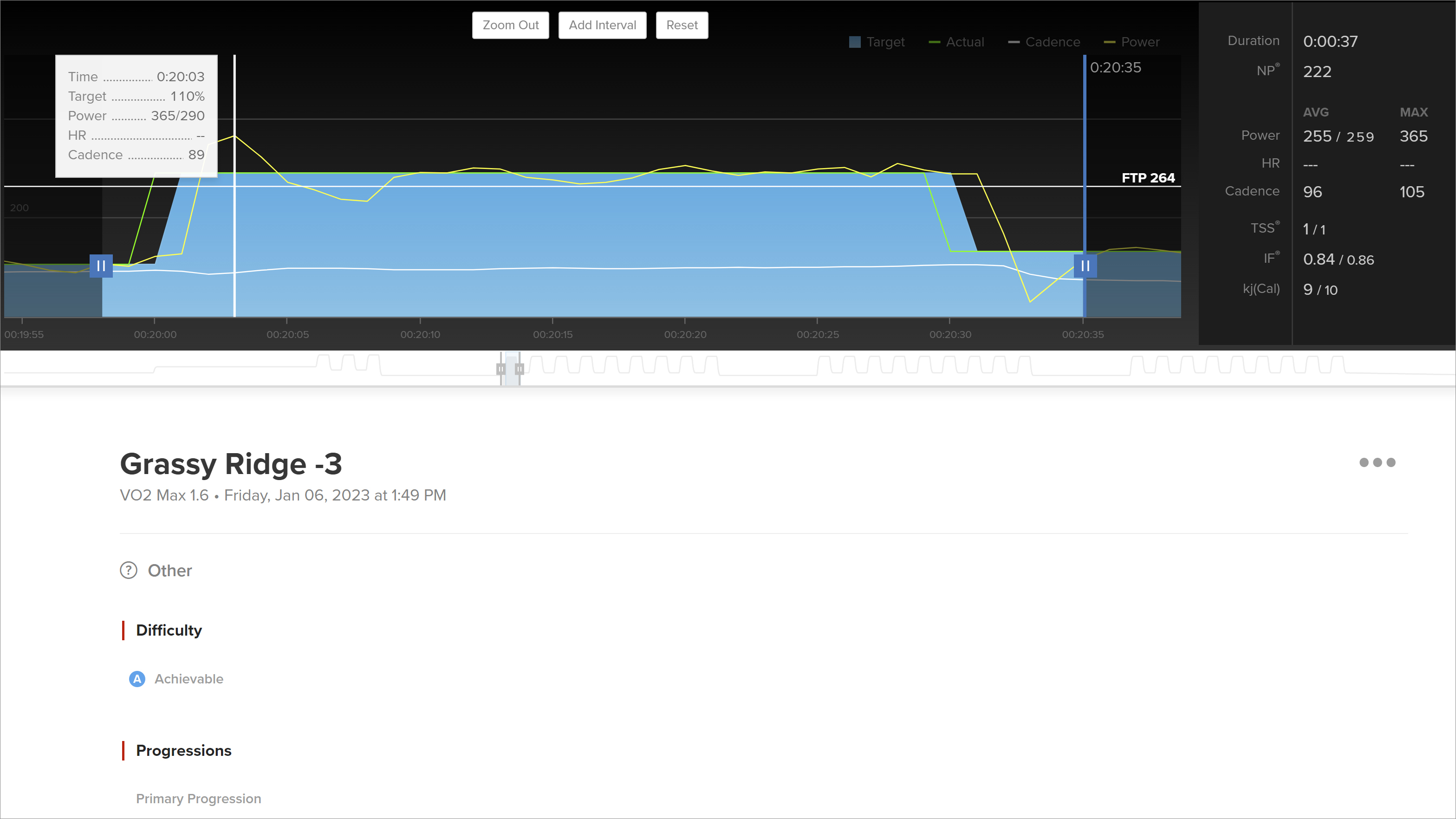
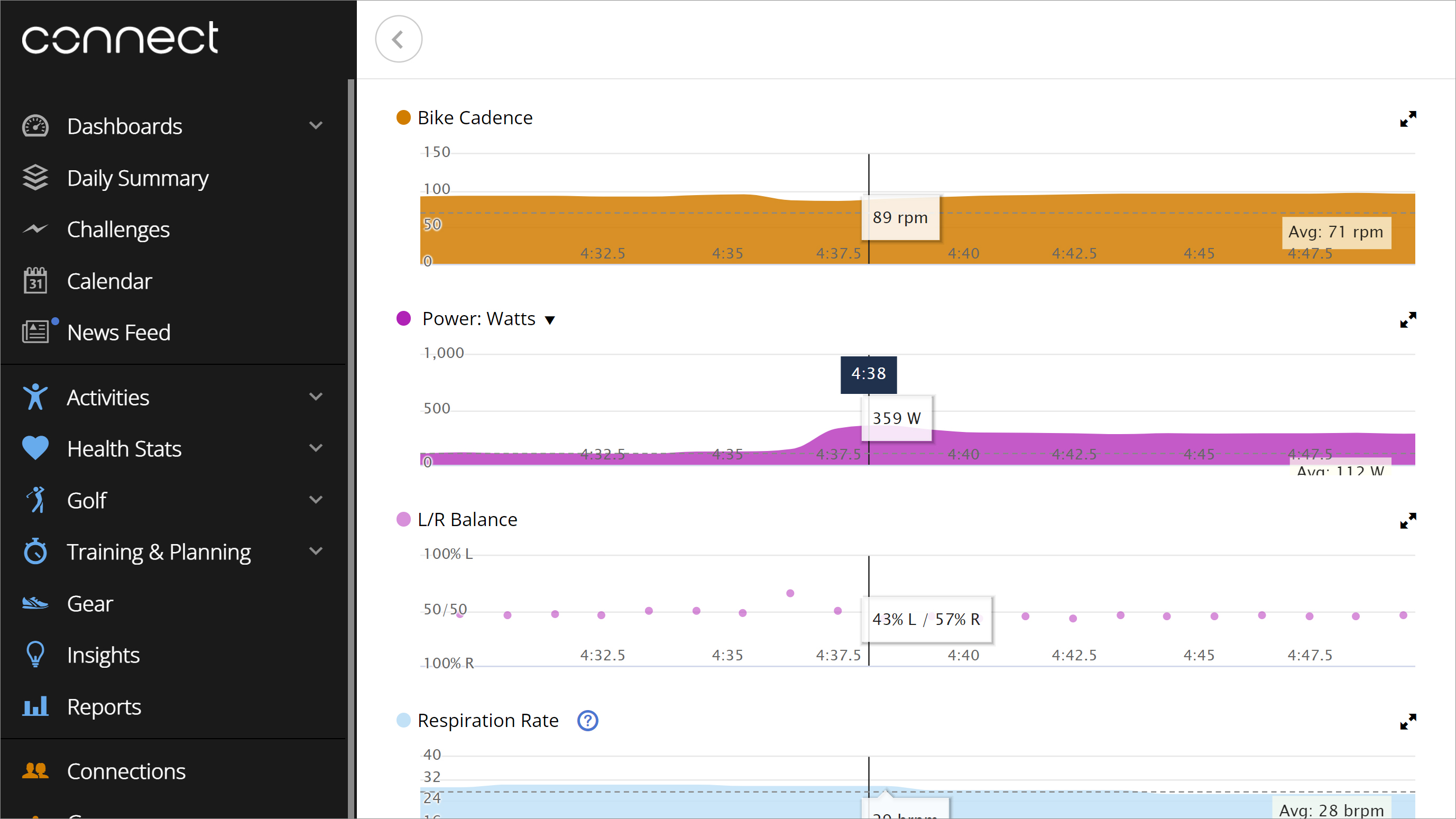
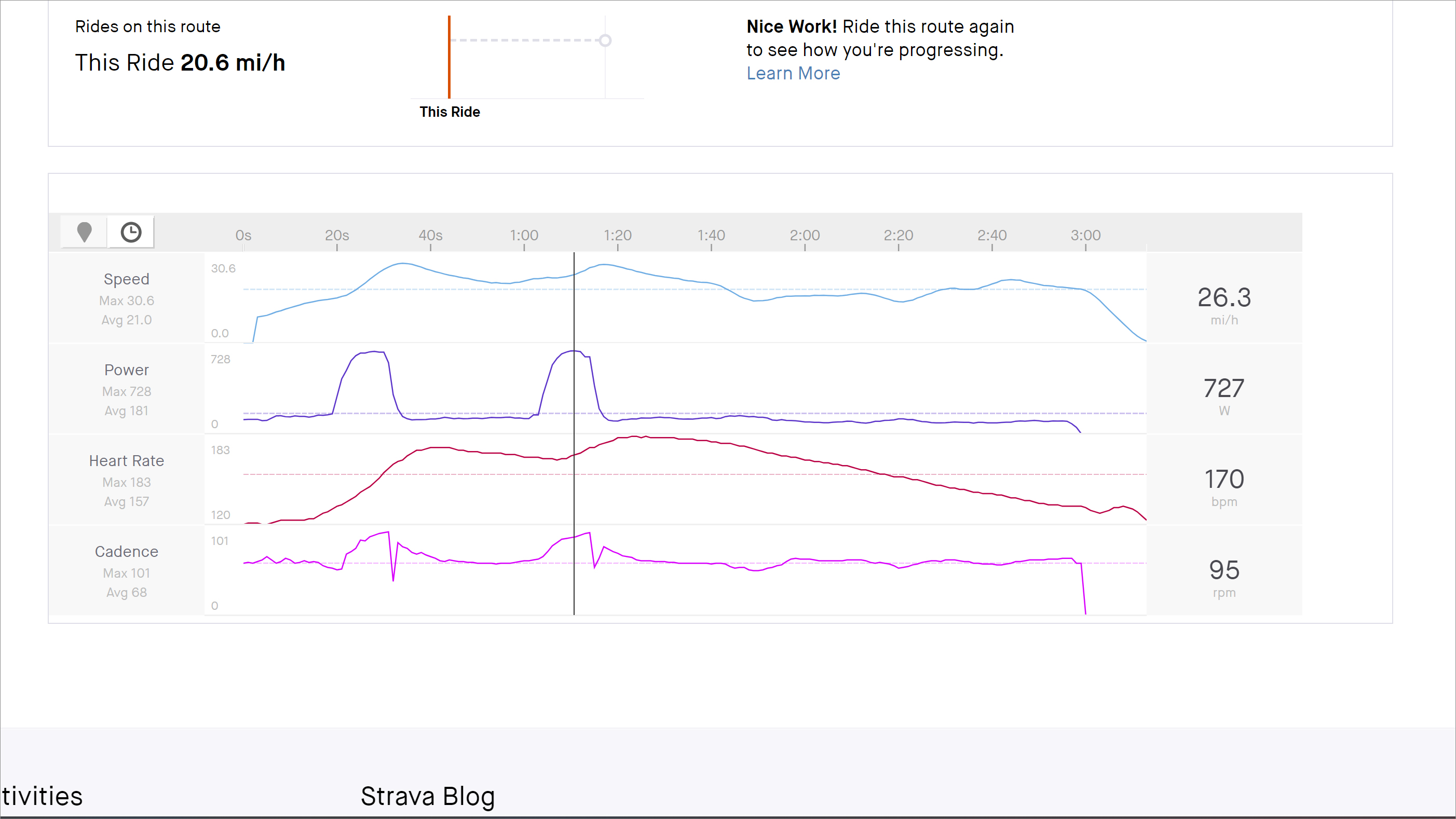
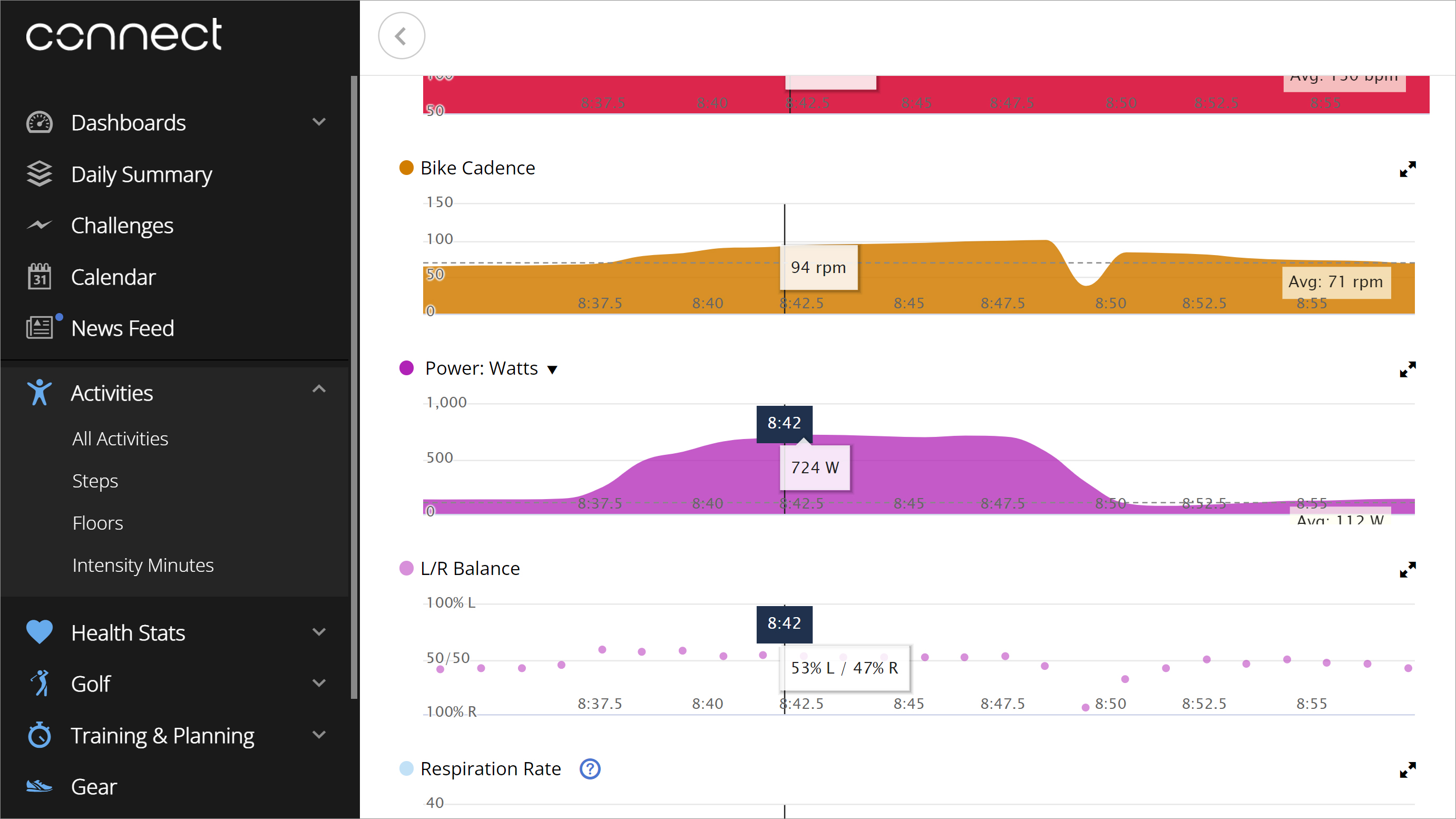
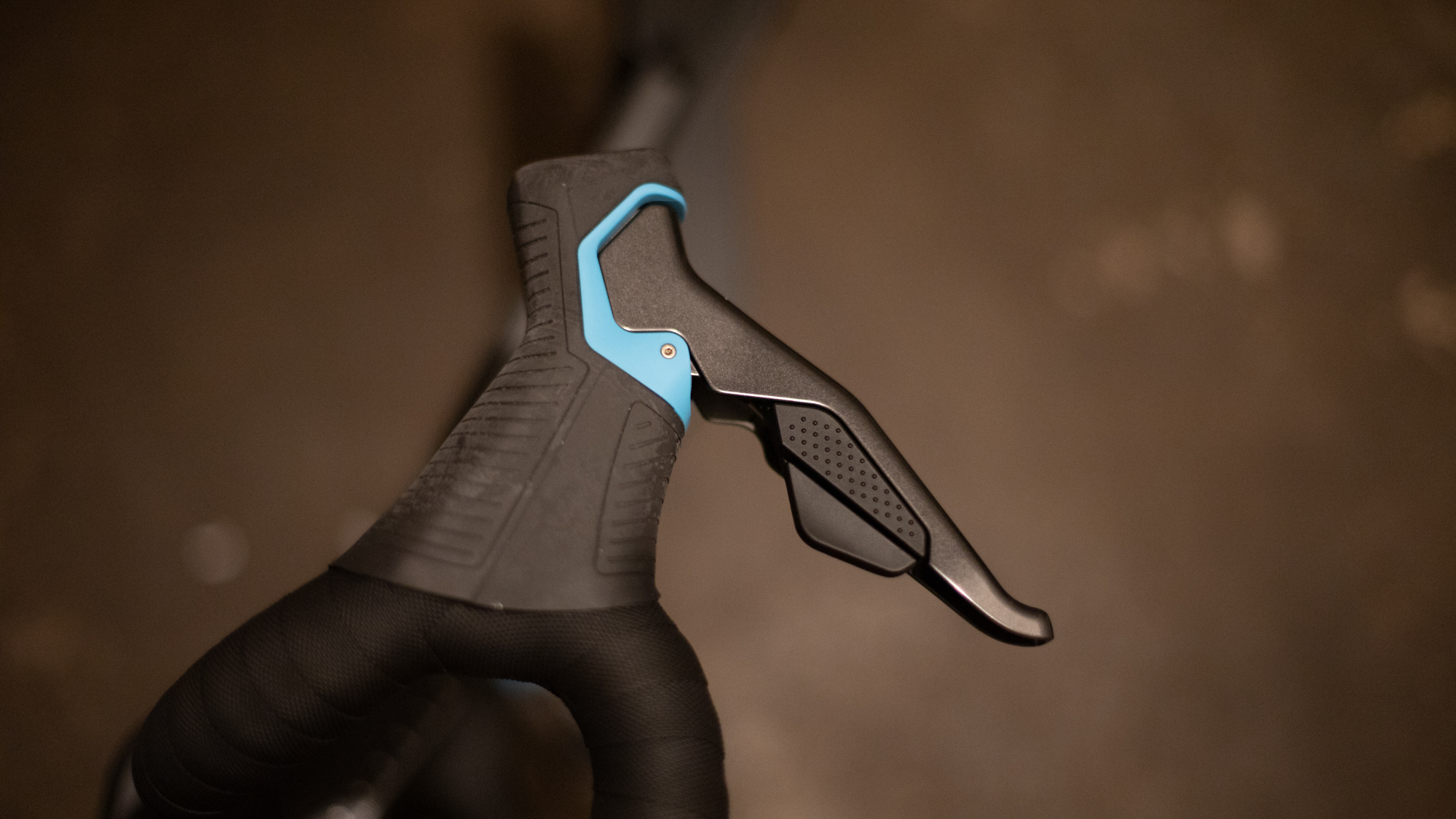
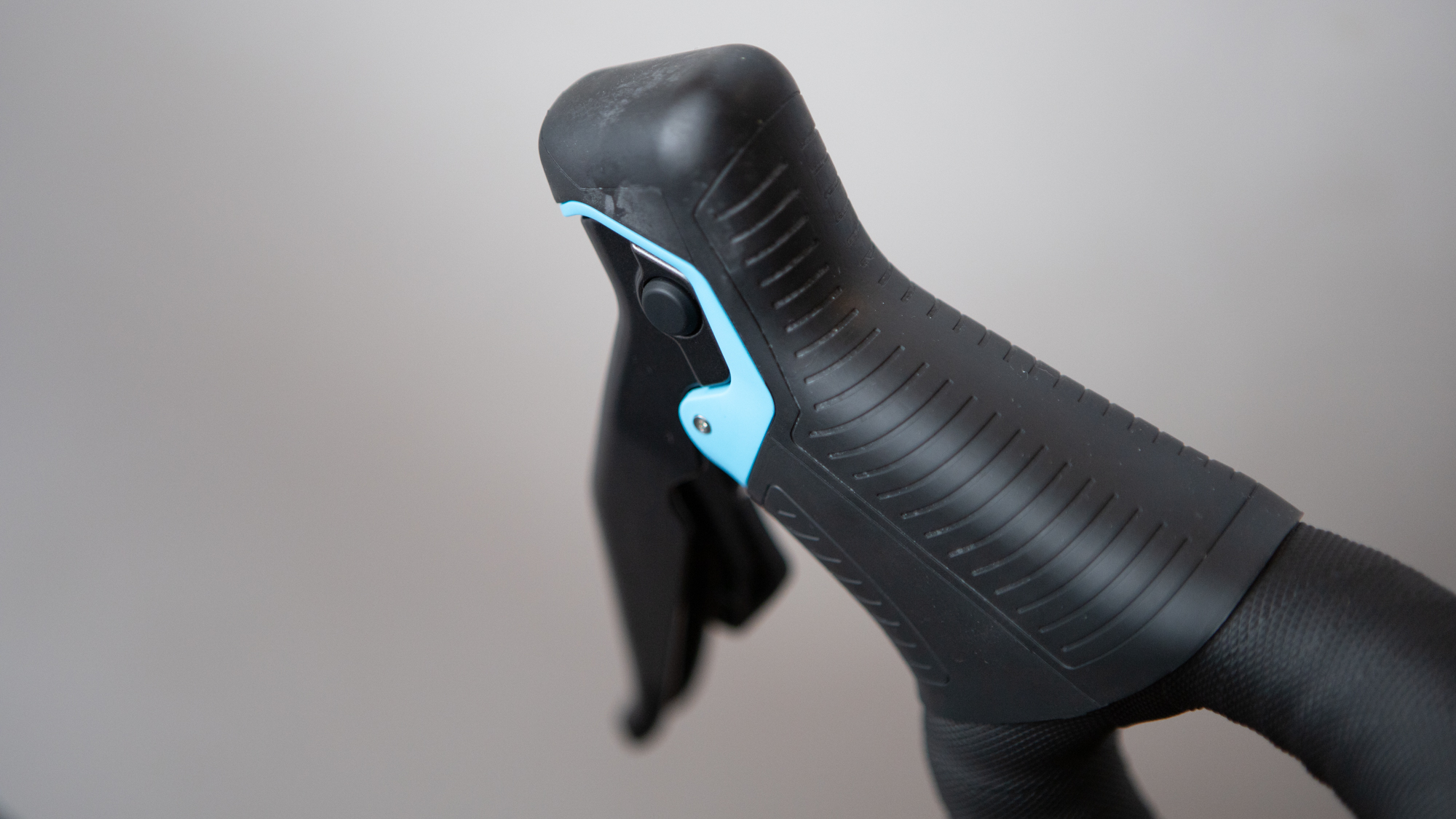
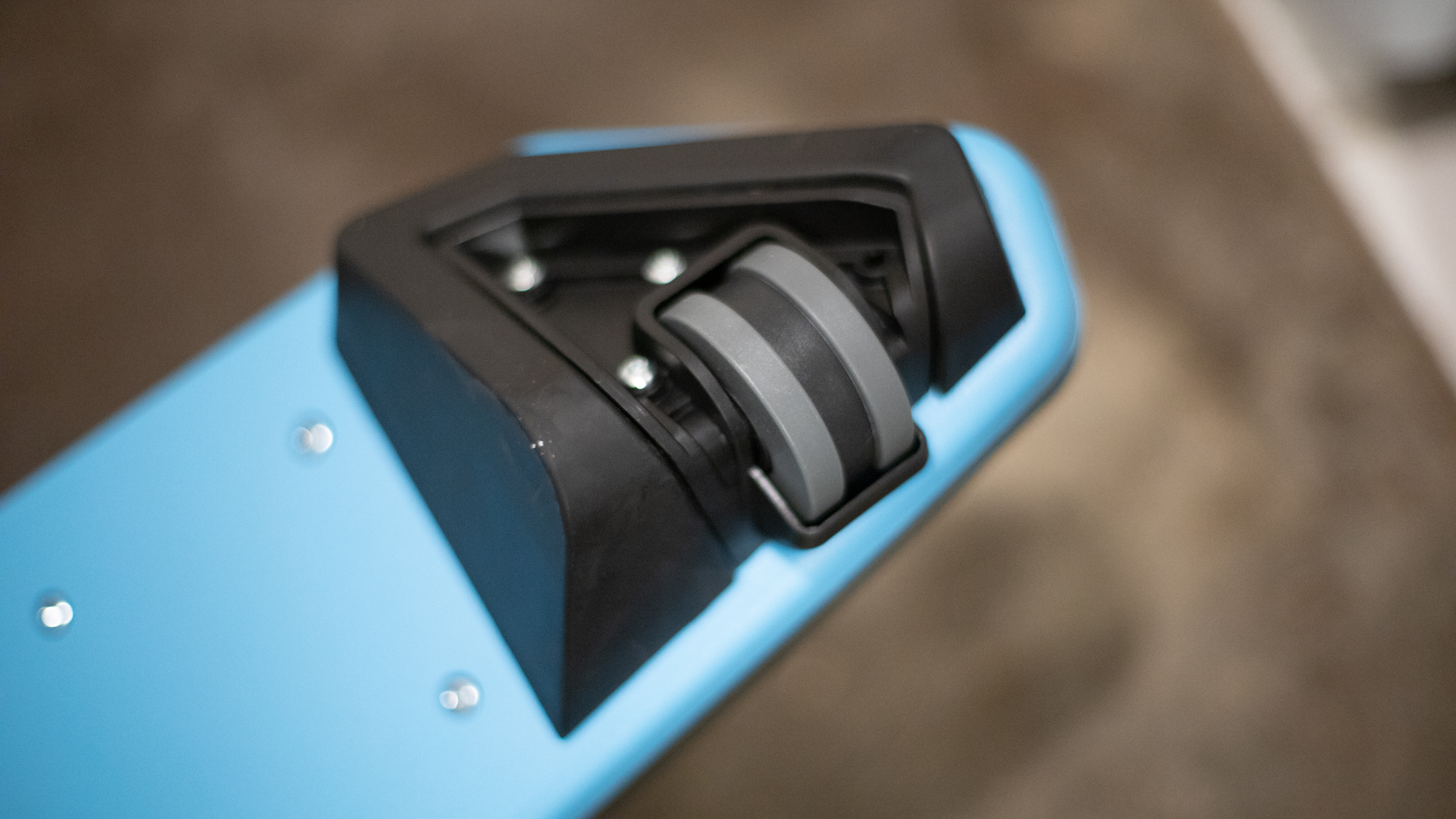
Verdict
It's easy to run through the highlights of what makes the Garmin Tacx Neo Bike Plus amazing to ride. There are only a couple of options for smart bikes designed to mimic outdoor riding instead of being spin bikes. Garmin knows how to build quality equipment and this unit isn't anything brand new. The brand made small updates to the previous version for the Plus model. Primarily that means it's easier to change the position of touch points and the controls now closely mimic an outdoor bike. Both generations are also upscaled versions of a smart trainer that sells a lot of units and is well regarded. If you are considering this bike as a way to upgrade your indoor riding experience you likely expected the discussion was going to be positive.
The one question I expect people are looking for an answer to has to do with power meter accuracy. There are reports of an issue and I have to take a position one way or the other. Knowing that, I checked with Garmin for a statement and I expected to get something along the lines of what I got. I also expected to show details of issues in the data but that's not what happened. The power data my unit recorded closely matched the power data recorded from a second source.
With that out of the way, the more important question is which smart bike makes sense for you. The two most recent are the Wahoo Kickr bike and the Garmin Tacx Neo Bike Plus. Given that the price is exactly the same, you are likely considering both if you are shopping.
If your focus is racing and interval training the Garmin makes more sense. It lacks the realism of the Climb functionality but when racing I find that feature more of a liability than an advantage. The Garmin unit is studier and has fewer moving parts. When it comes to intervals, I like the tighter adherence to the requested power. Garmin also offers dual-sided power measurement while Wahoo is essentially a hub-based power meter and only offers a combined measurement from both legs. On the other hand, if you prefer a more realistic ride then the functionality of the Climb feature is always going to be lacking from the Garmin unit. Both units are a huge upgrade from a standard smart trainer and both are incredibly good but they do have a slightly different focus.
It’s also worth considering, in both situations, if maybe you are okay without the latest updates and could save a bit of money going for the older iteration. For now at least, it’s not necessary to buy used and you do save money. My only caution would be that it’s already a substantial investment and it is going to last for many years. If you can swing the price difference, you might want to start from the latest platform.
| Design and aesthetics | I love the look, the lights are fun, and my thighs don’t rub the seat post but I do wish the phone tray was removable | 9/10 |
| ERG Mode | My testing showed tight adherence to the requested power but it can occasionally hold so tight it causes a failed interval | 9/10 |
| Ride feel | I find the powered flywheel to be a big addition to a natural feeling but Wahoo has that feature as well and if you are looking for simulation, having no ability to raise the front when climbing is a loss. | 9/10 |
| Noise and stability | Dead quiet and totally stable. | 10/10 |
| Value | The price has gone up compared to the last generation and there’s not a lot of added features. It’s not a budget choice but given that Wahoo is asking the same price Garmin isn’t wildly out of the park. | 8/10 |
| Overall | Row 5 - Cell 1 | 90% |
Tech Specs: Garmin Tacx Neo Bike Plus
- Price: £3,499.99 / $3,999.99
- Tech Specs: Garmin Tacx Neo Bike Plus
- Max power: 2200 watts
- Accuracy: +/-1%
- Max grade: 25%
- Connectivity: BLUETOOTH Low Energy (LE), ANT+ technologies
- Compatibility: Apple, Android, Windows
- Unit Dimensions: (L x W x H): 54.7" x 29.5" x 46.1" (1390 x 750 x 1170 mm)
- Display: 4.5" integrated
- Weight: 110 lbs (50 kg)
- Q-Factor: 147mm
- Saddle Height (from BB centre): 25.2"-35.4" (640-900mm)
- Handlebar Stack Height (from BB centre): 21.7"-31.9" (550 -810 mm)
- Handlebar Reach (from saddle centre): 15.9"-33.3" (405-845mm)
- USB Ports: 2 USB type-A ports (charging only)
- Calibration: Not required
- Crank Length: Choose among 5 crank lengths (165-175)
Josh hails from the Pacific Northwest of the United States but would prefer riding through the desert than the rain. He will happily talk for hours about the minutiae of cycling tech but also has an understanding that most people just want things to work. He is a road cyclist at heart and doesn't care much if those roads are paved, dirt, or digital. Although he rarely races, if you ask him to ride from sunrise to sunset the answer will be yes. Height: 5'9" Weight: 140 lb. Rides: Salsa Warbird, Cannondale CAAD9, Enve Melee, Look 795 Blade RS, Priority Continuum Onyx
